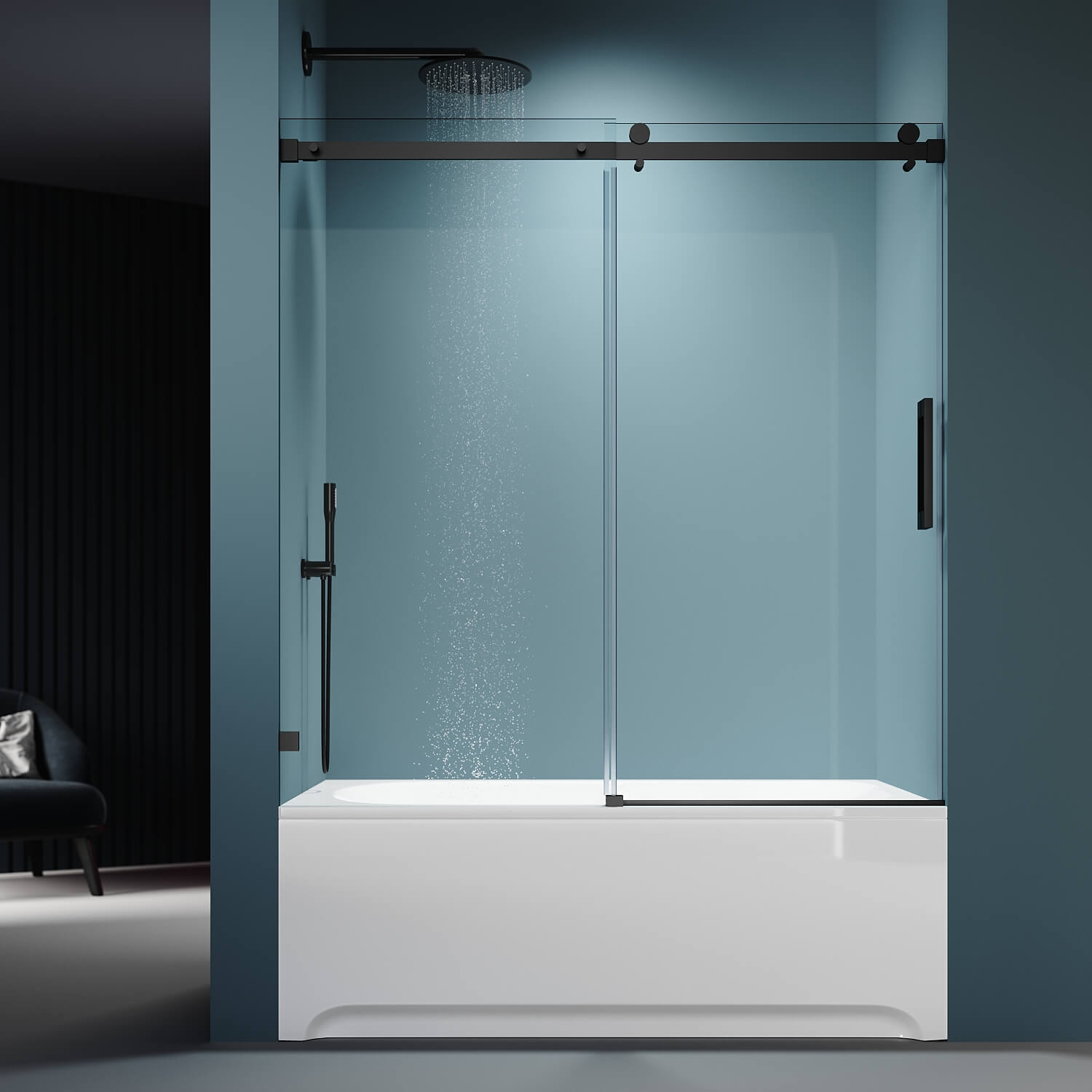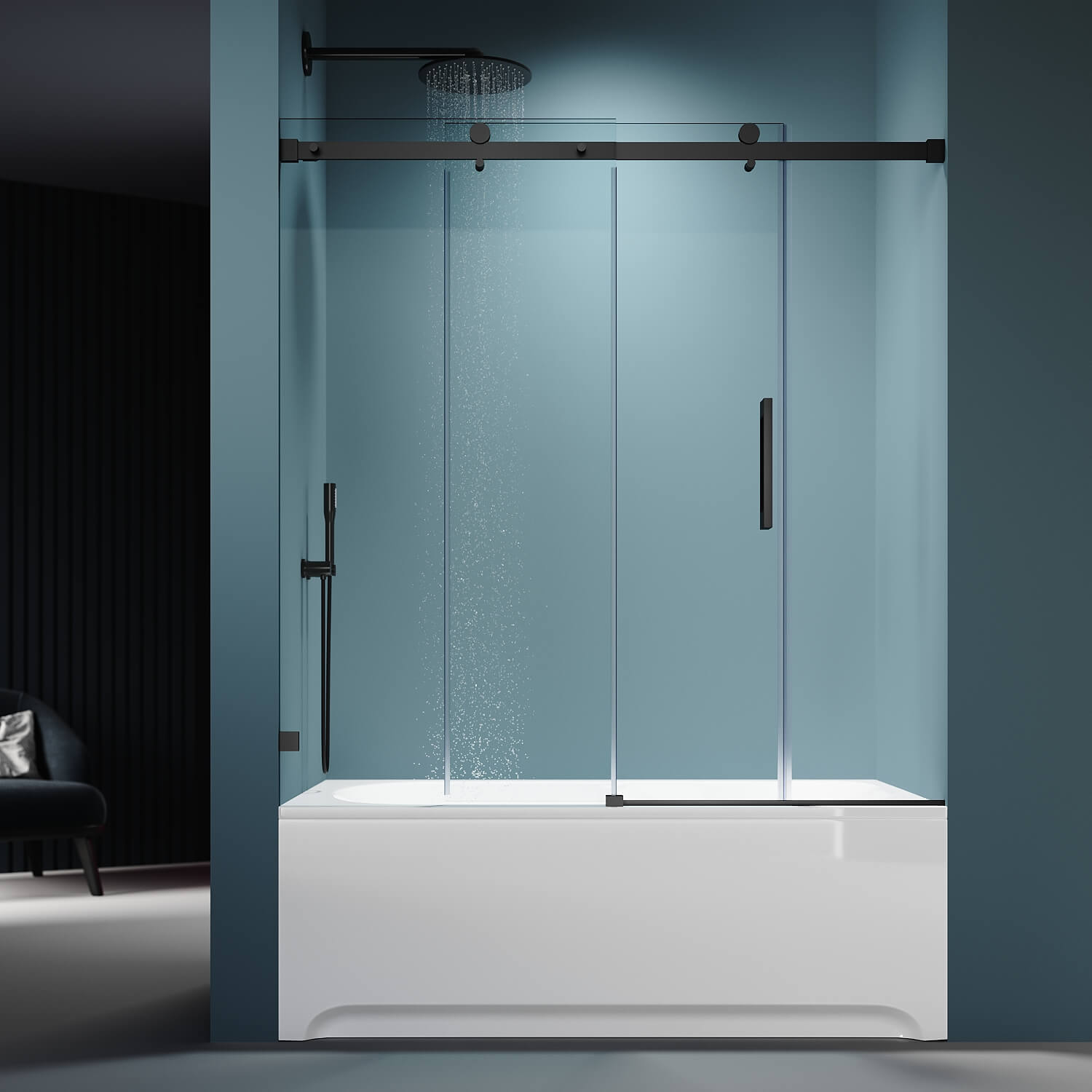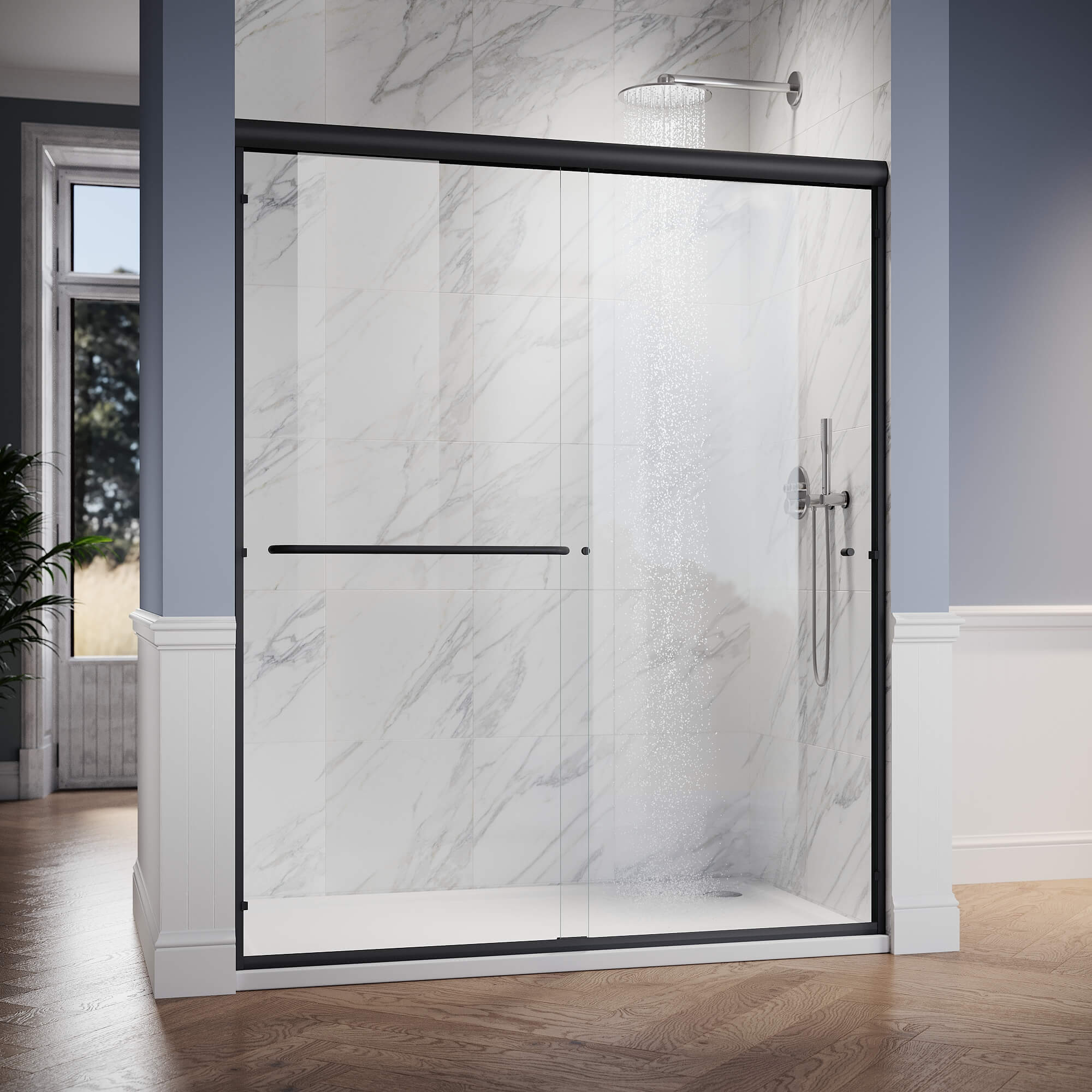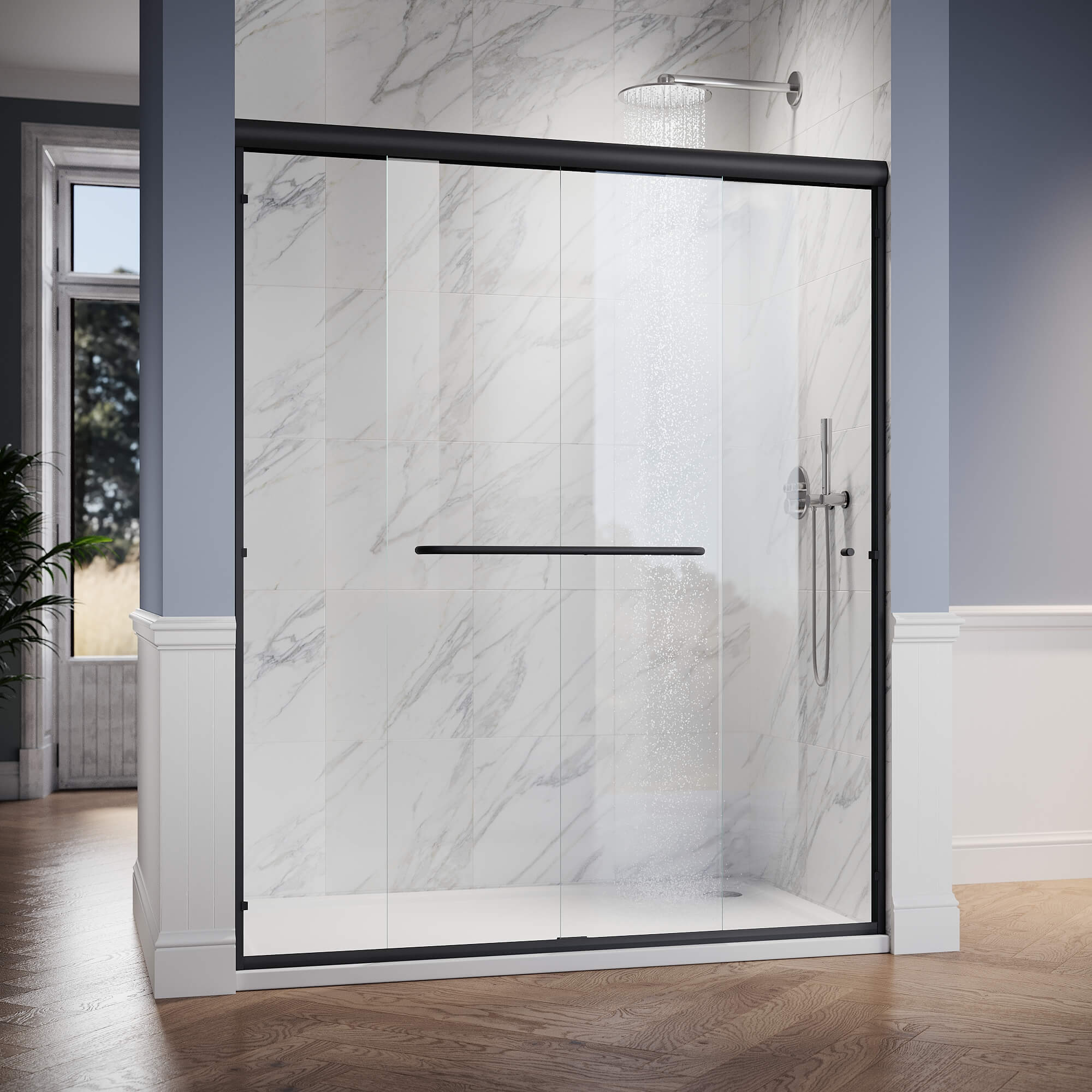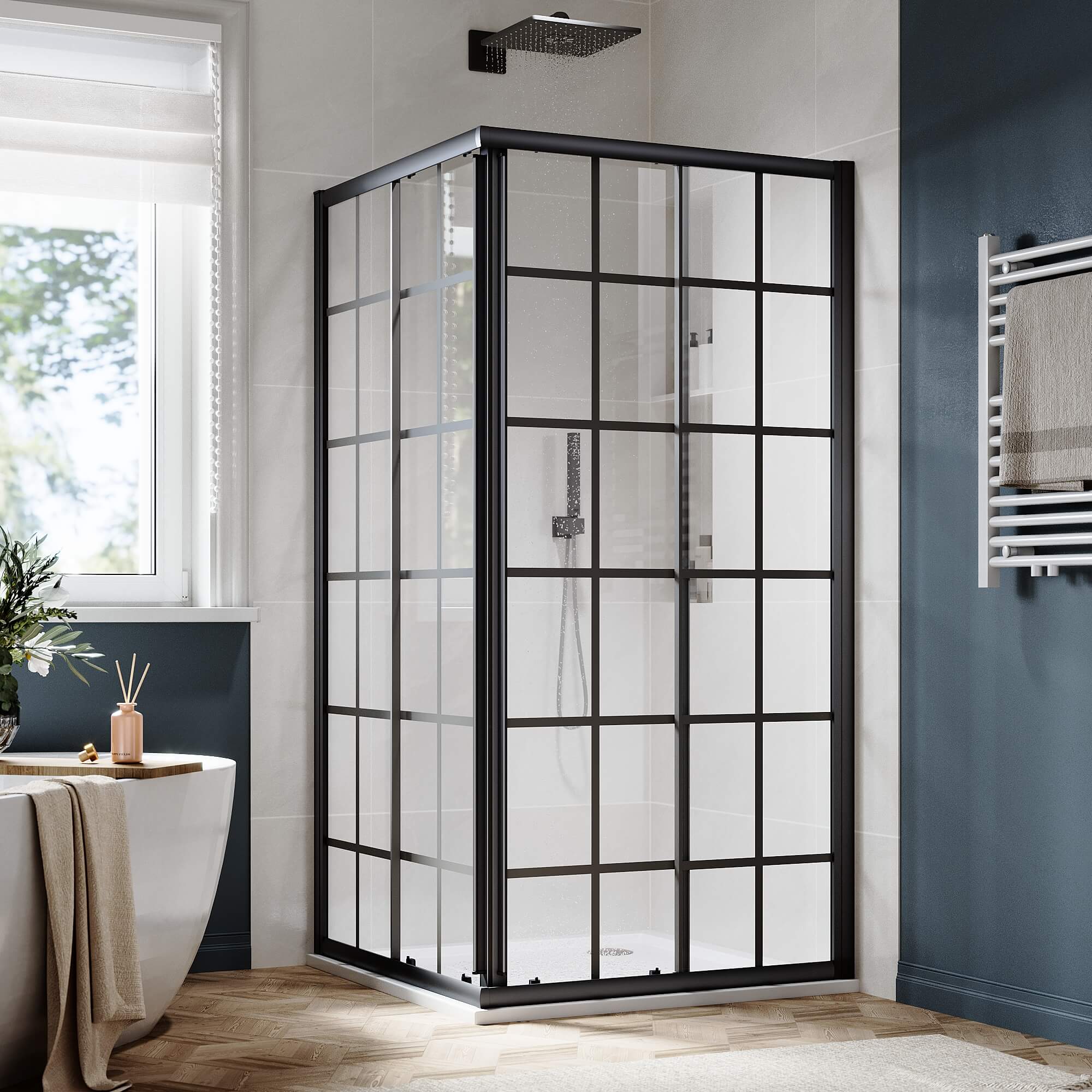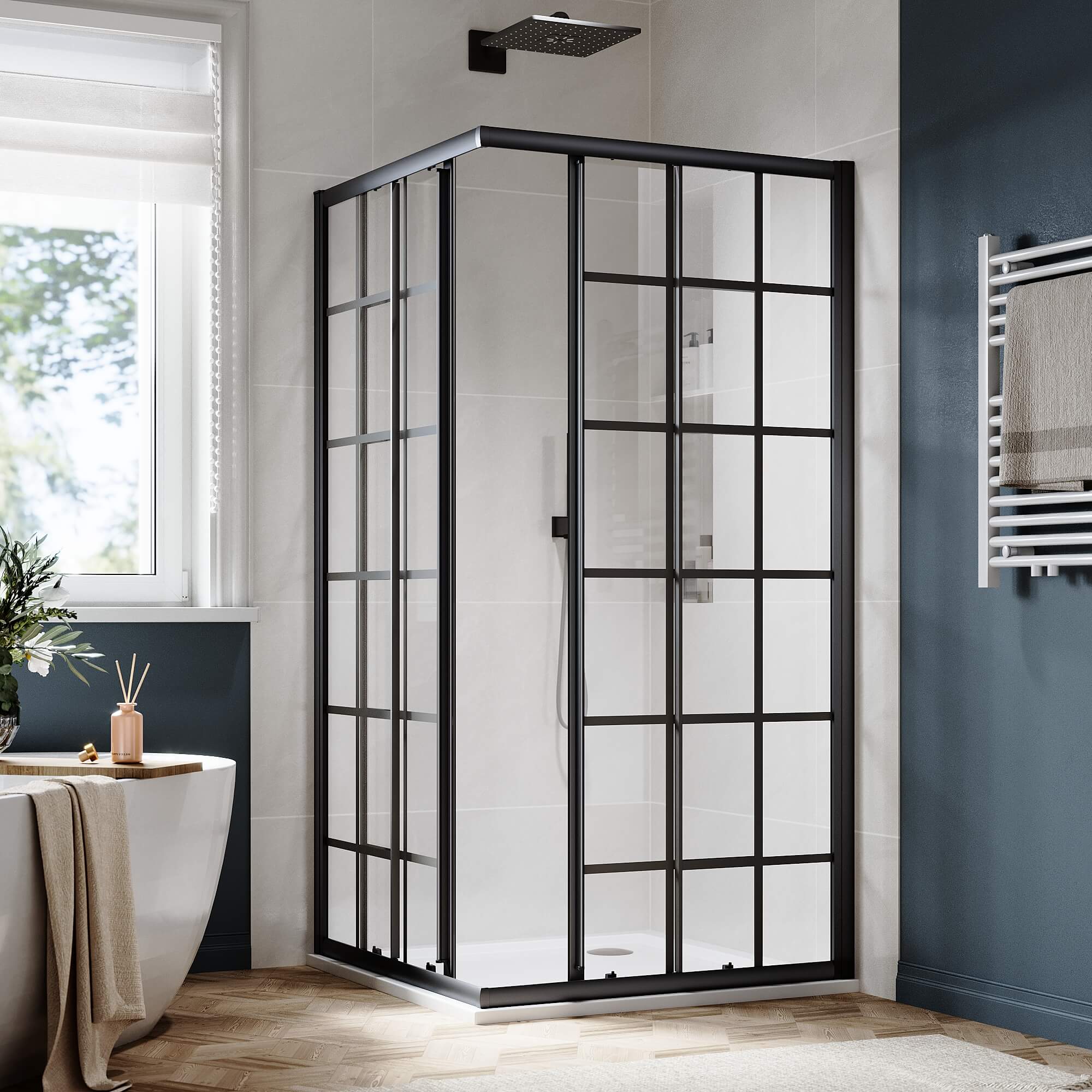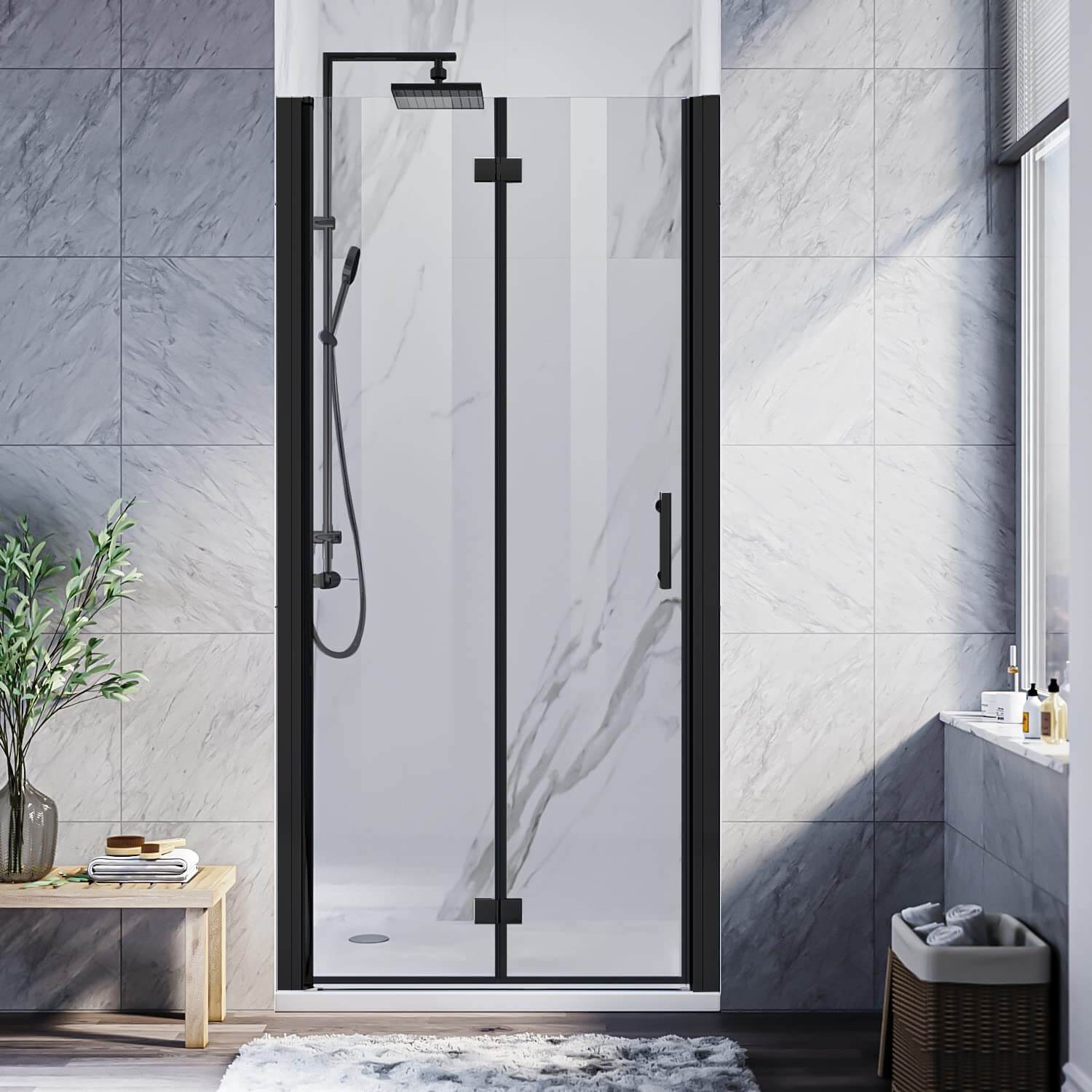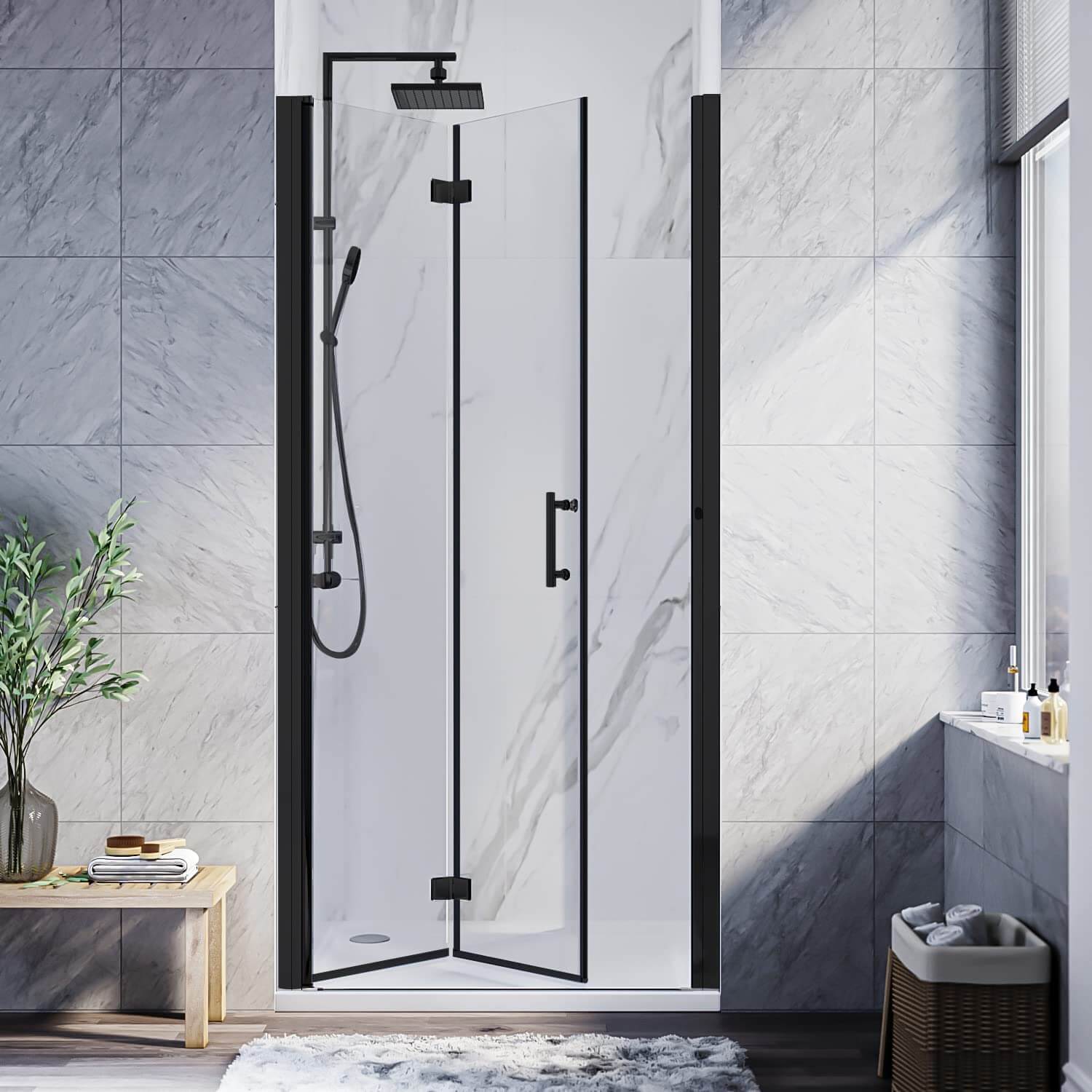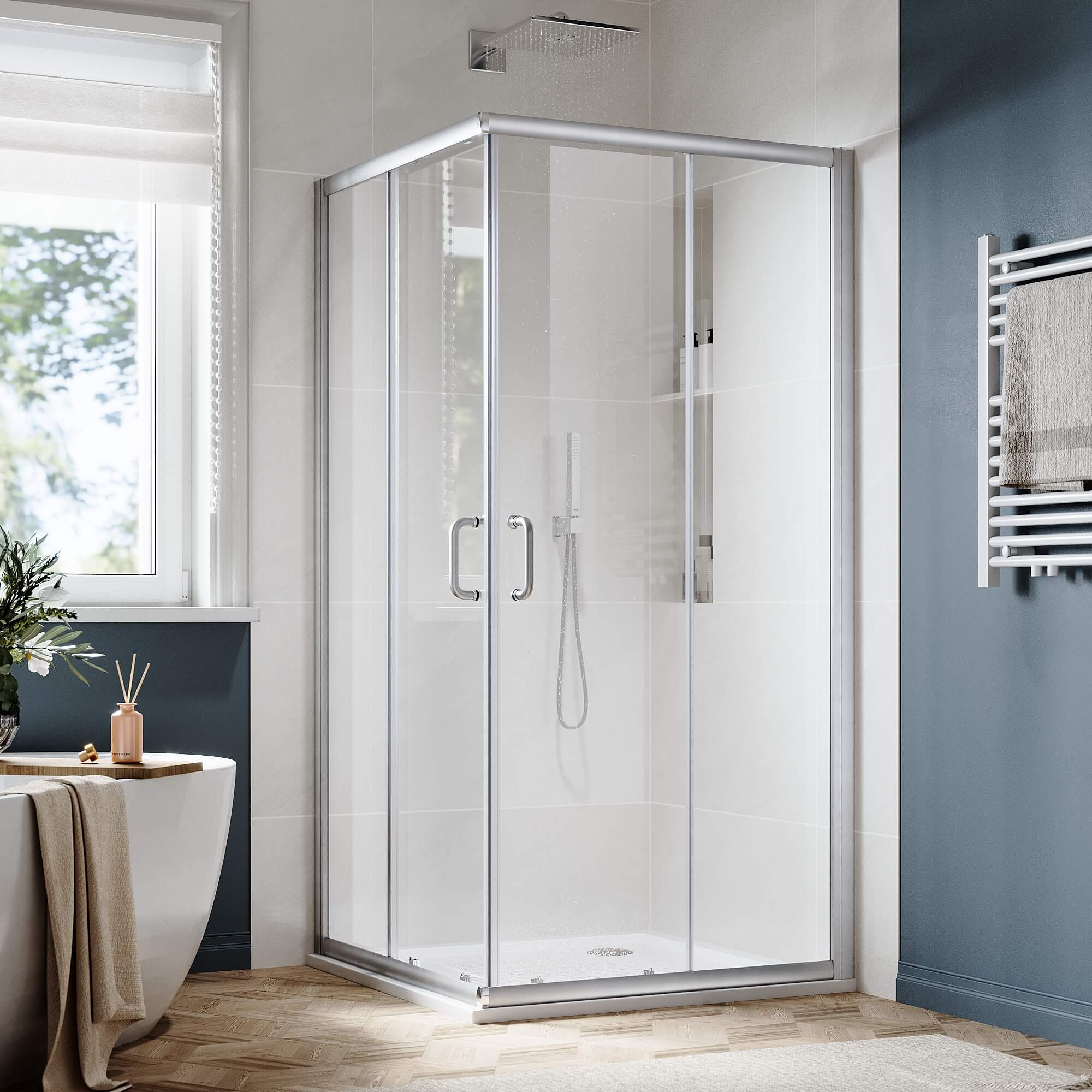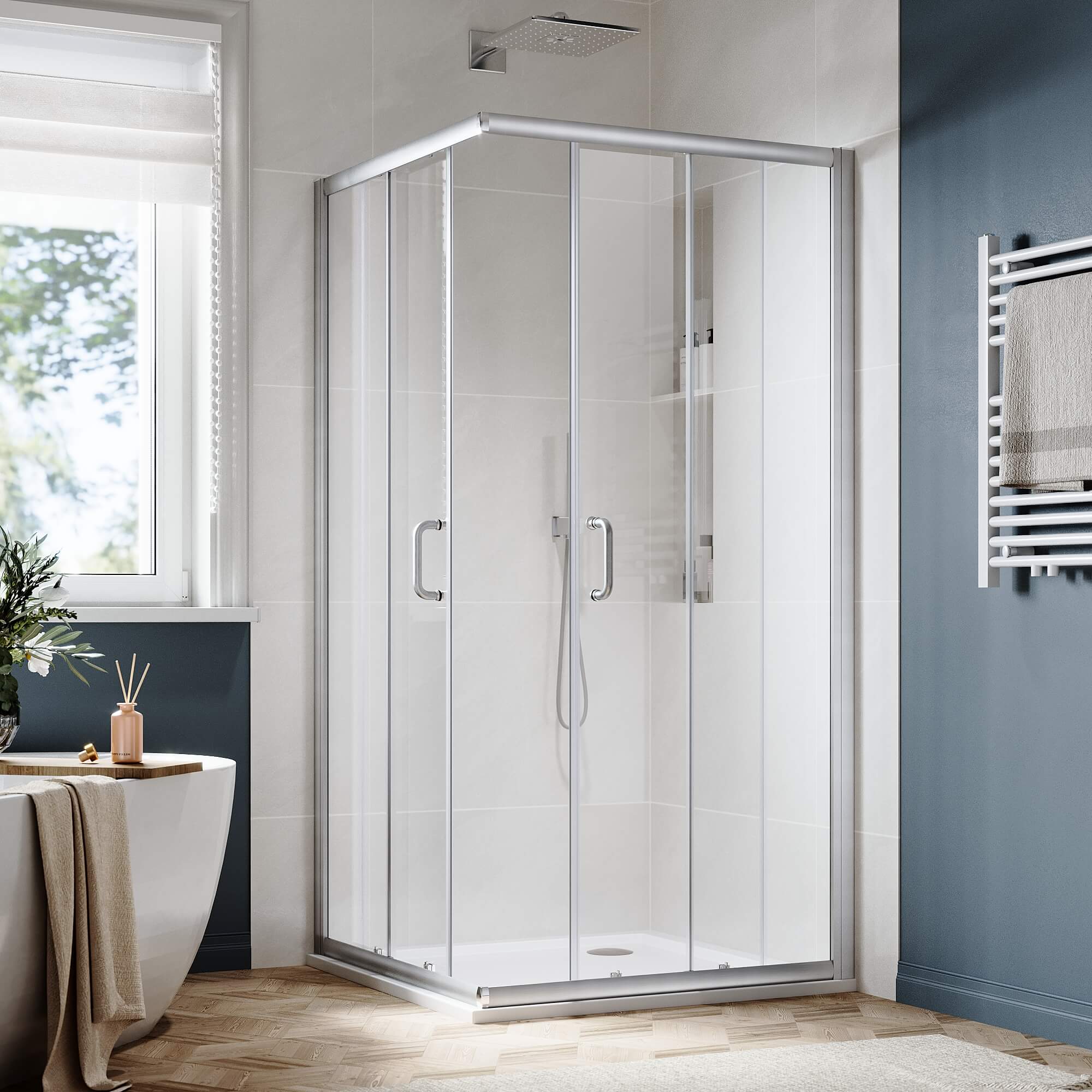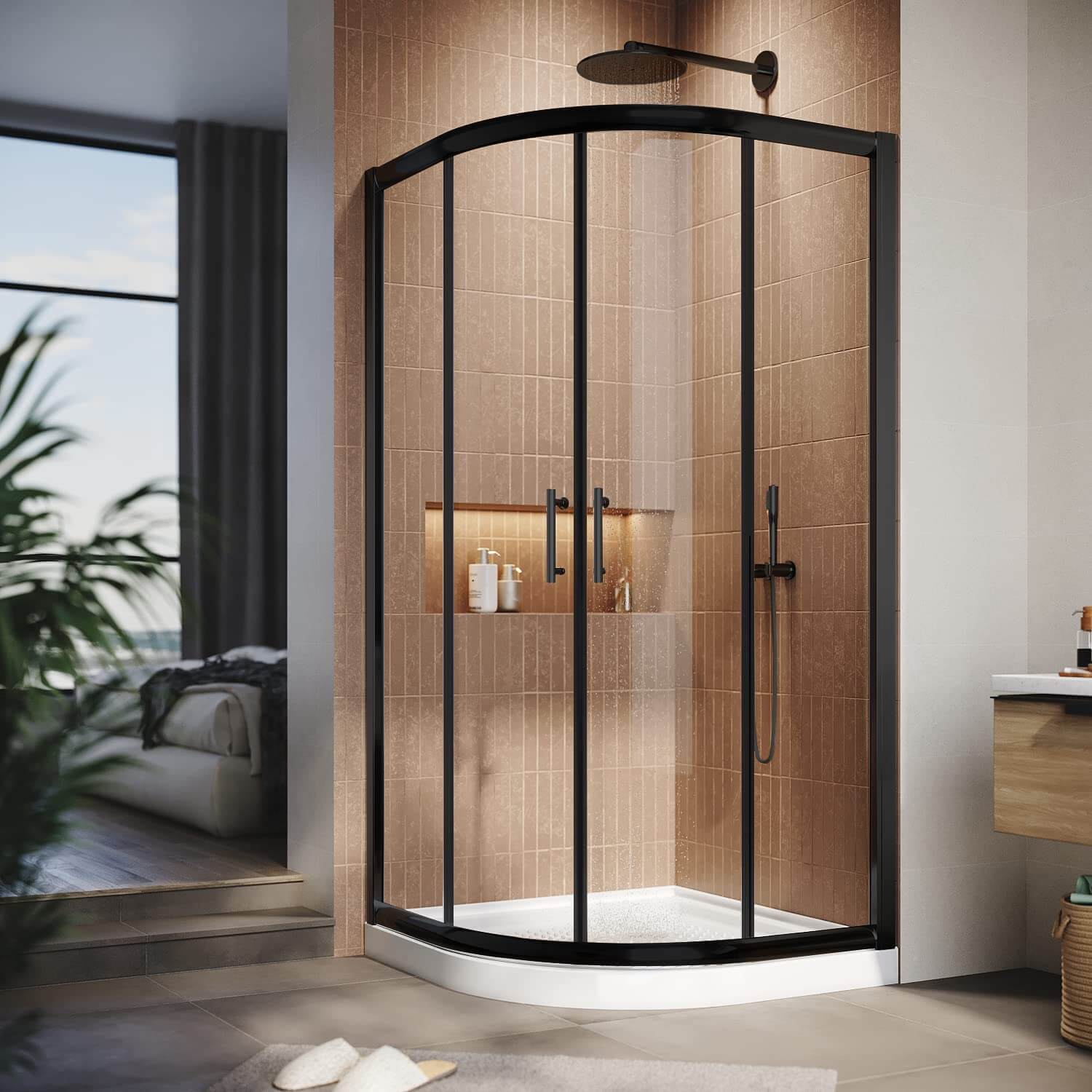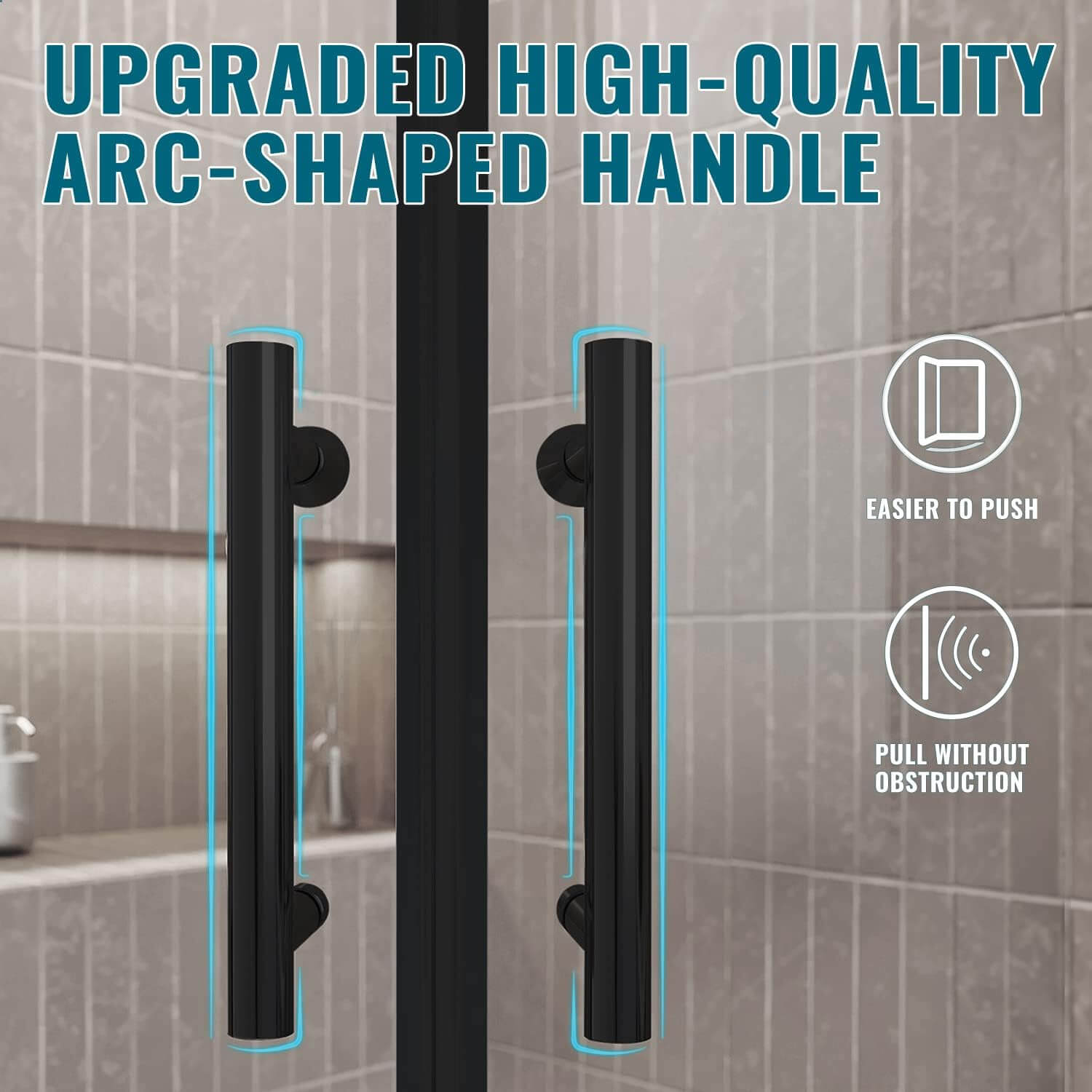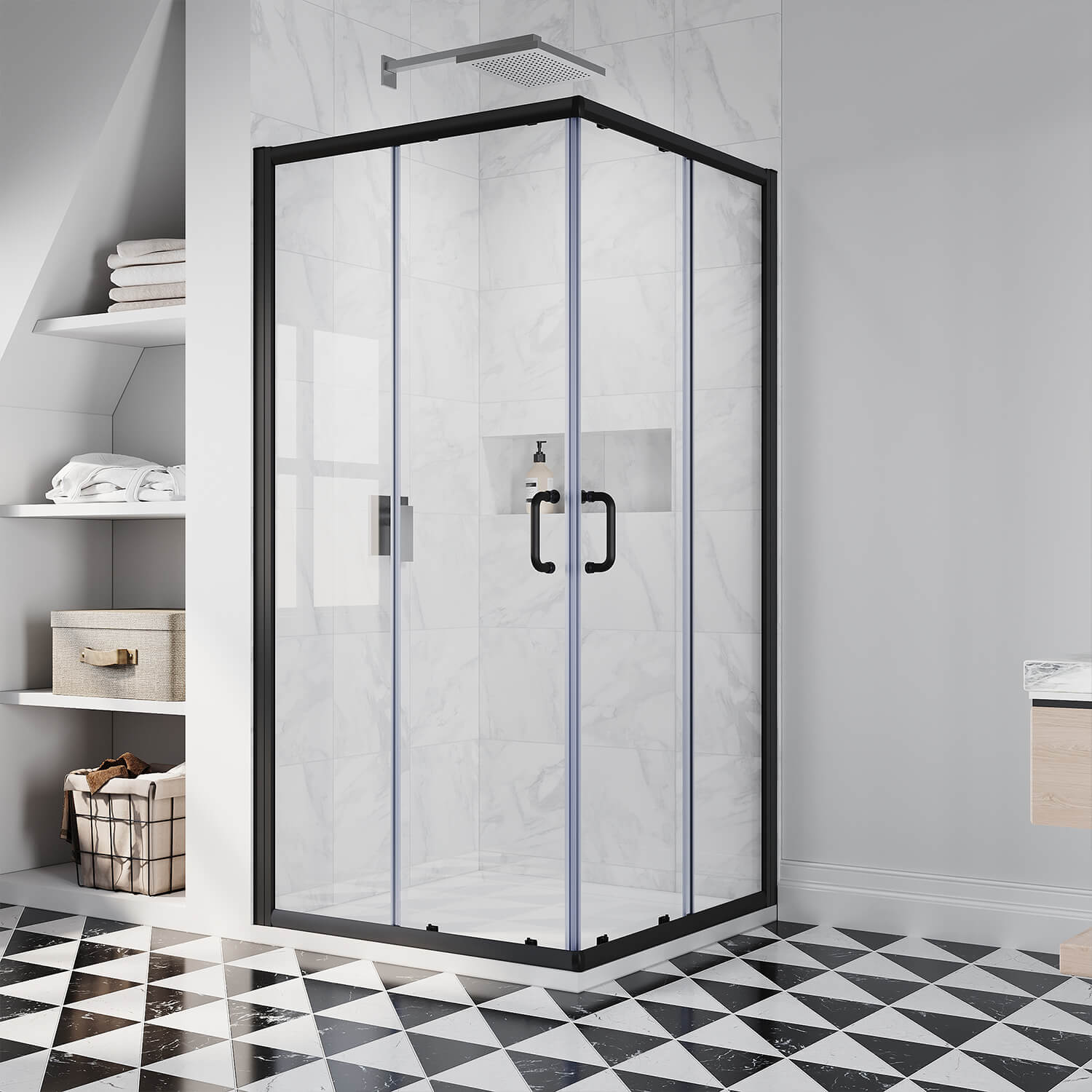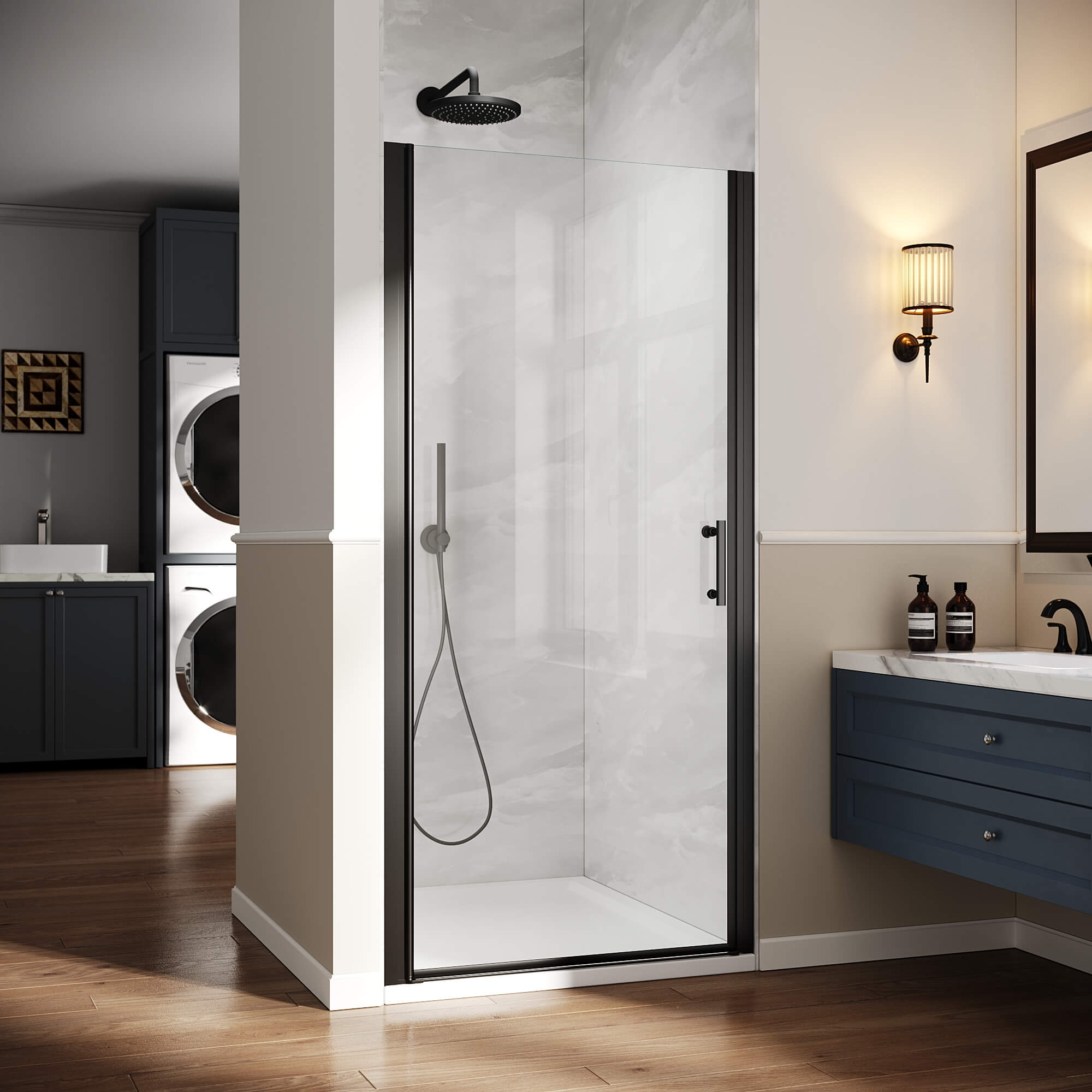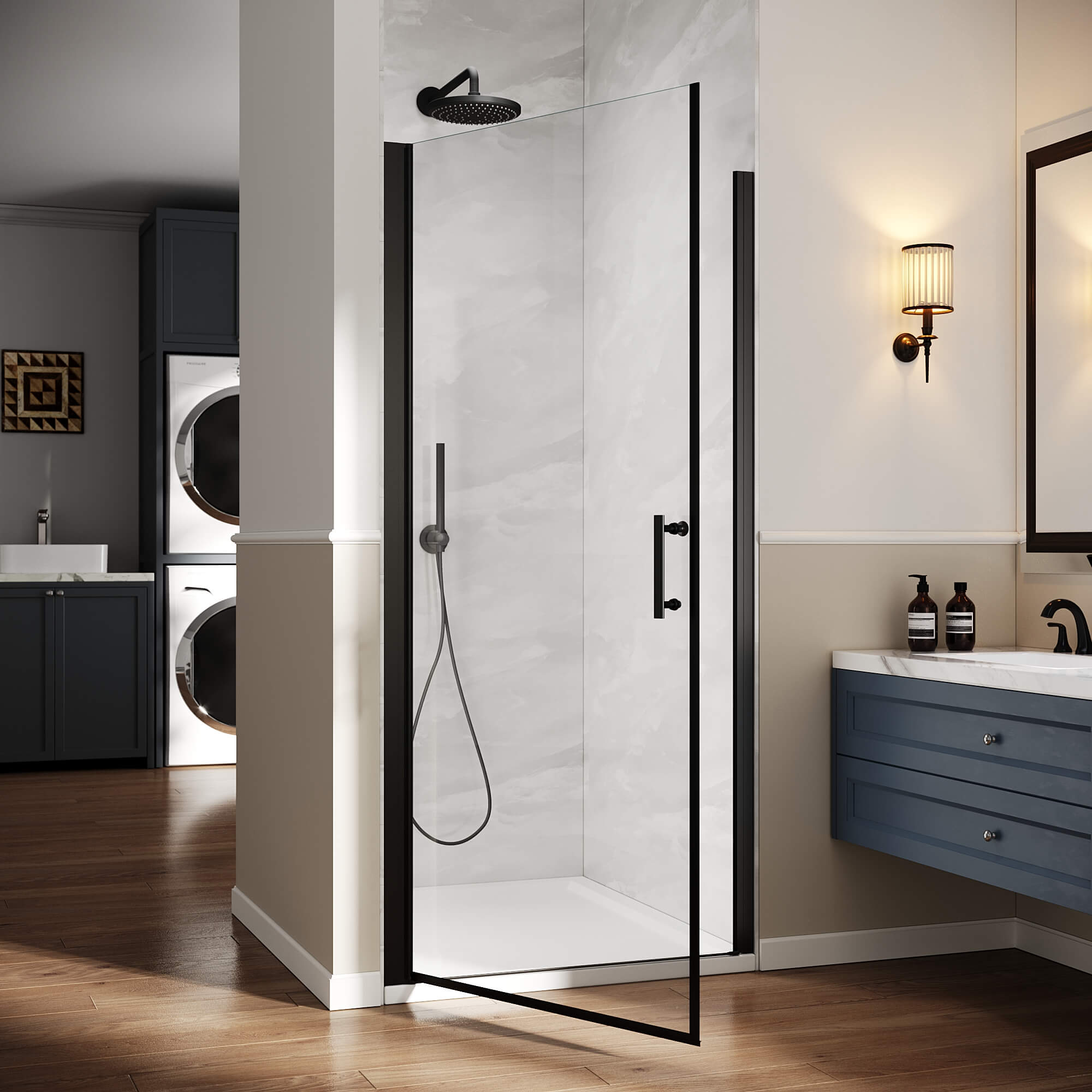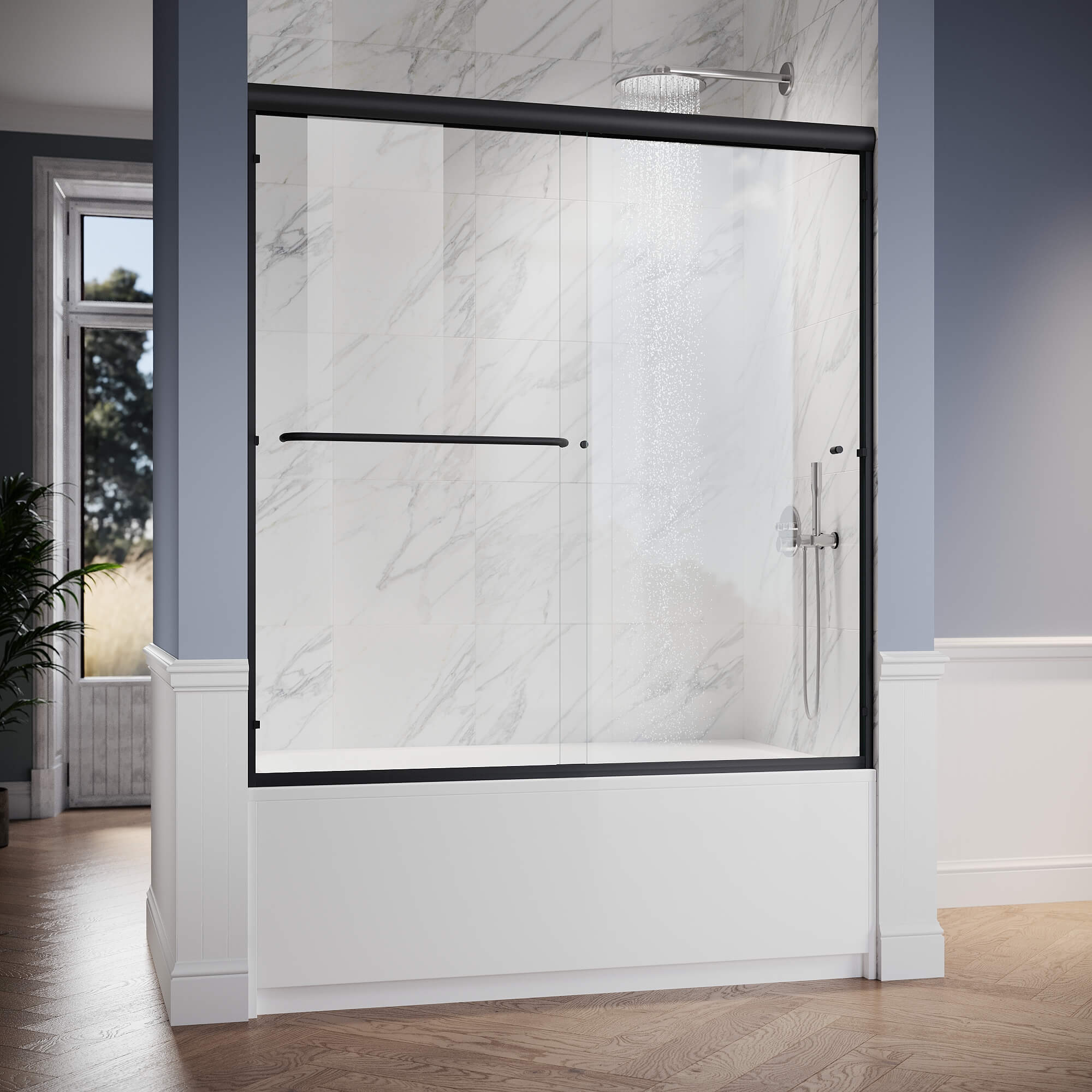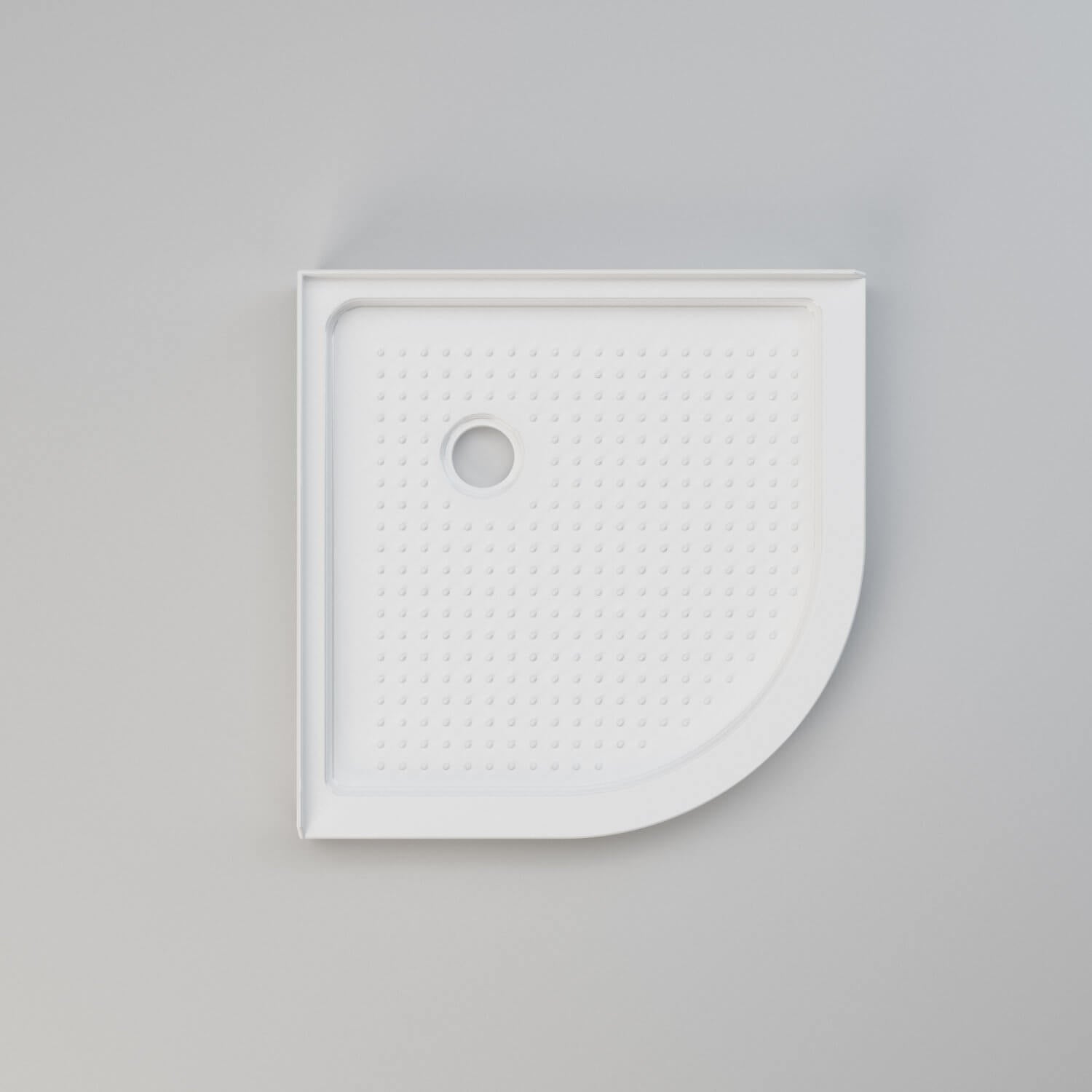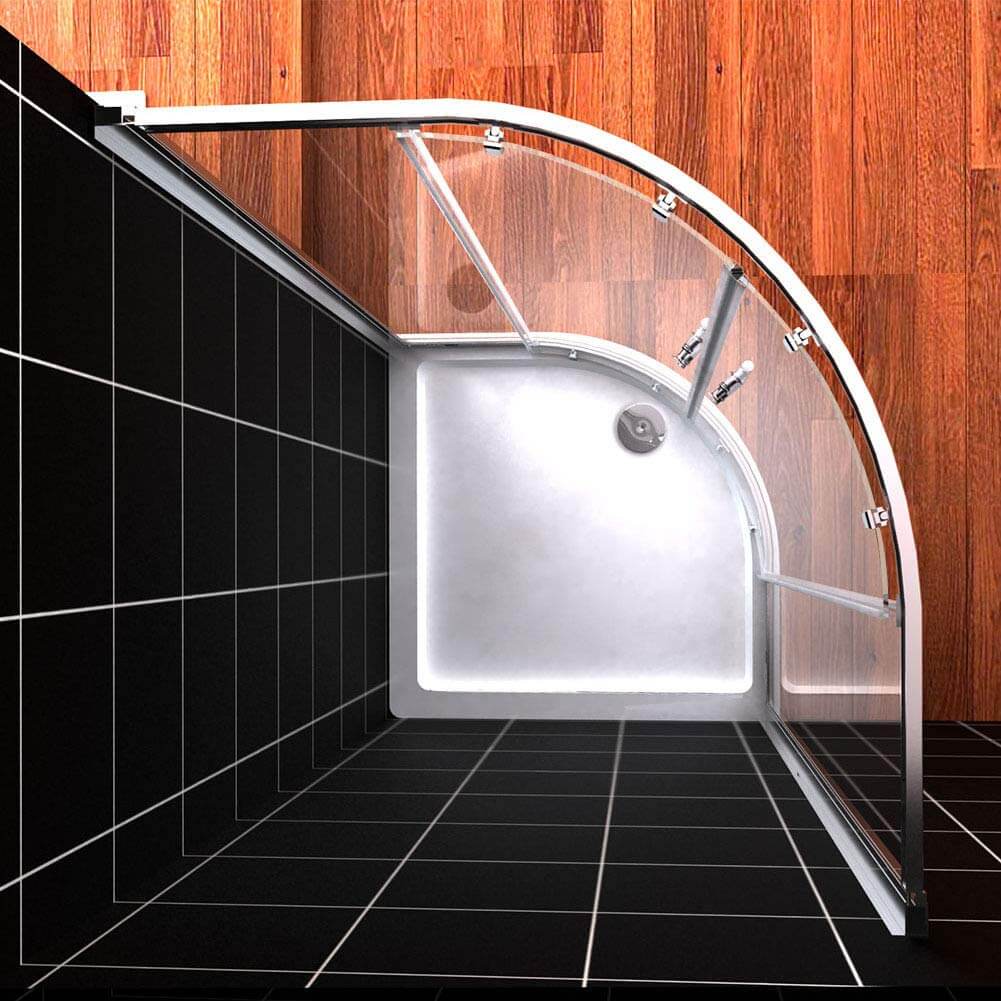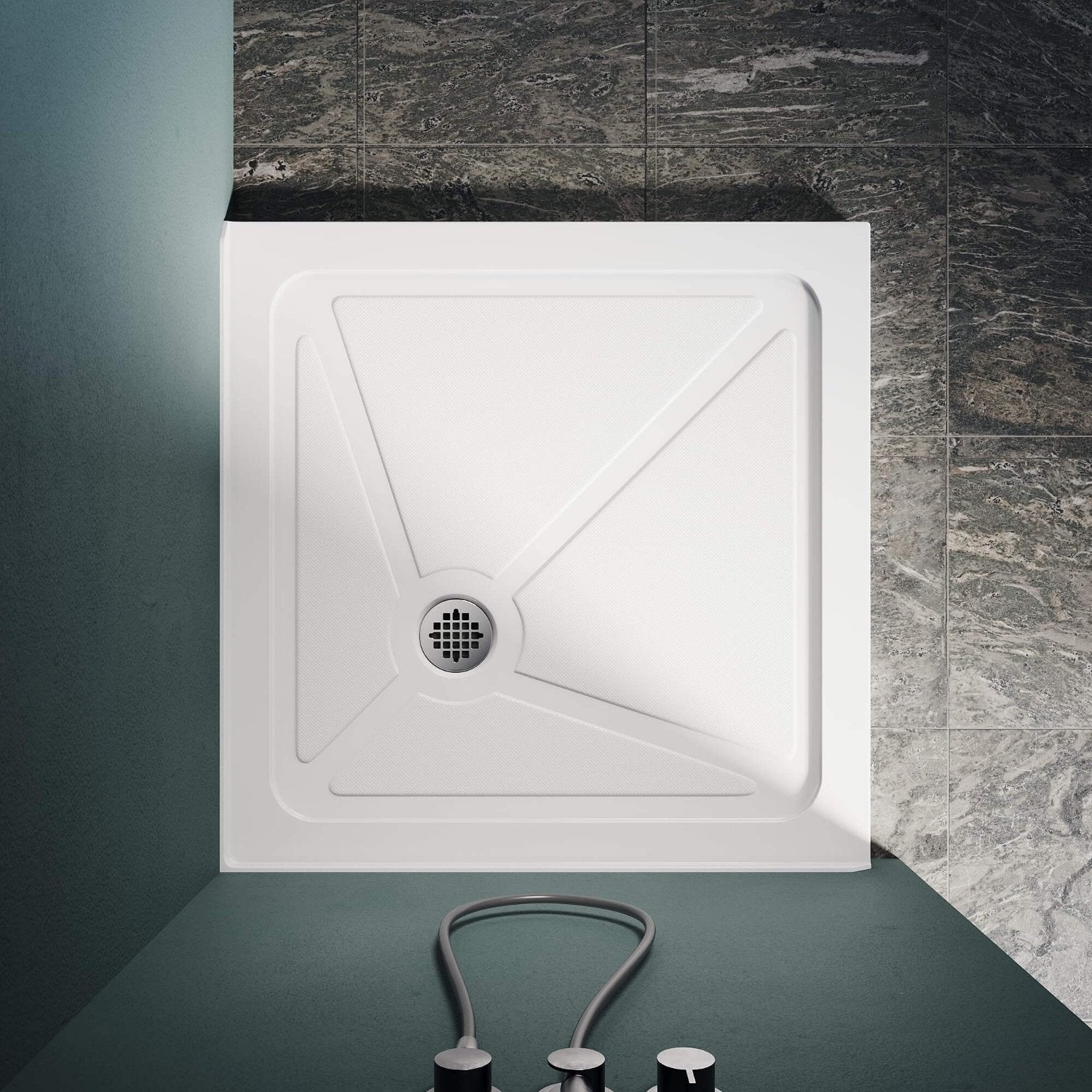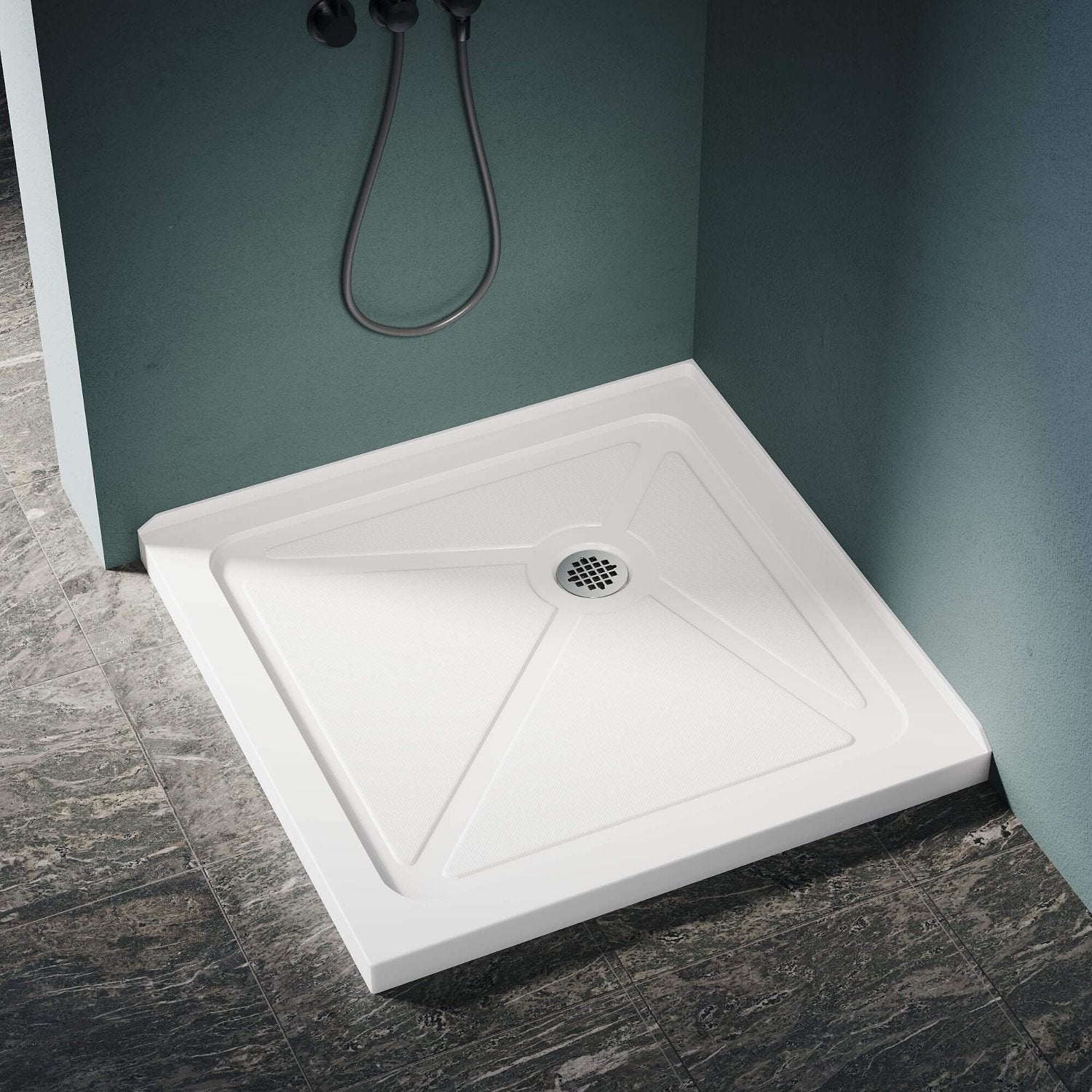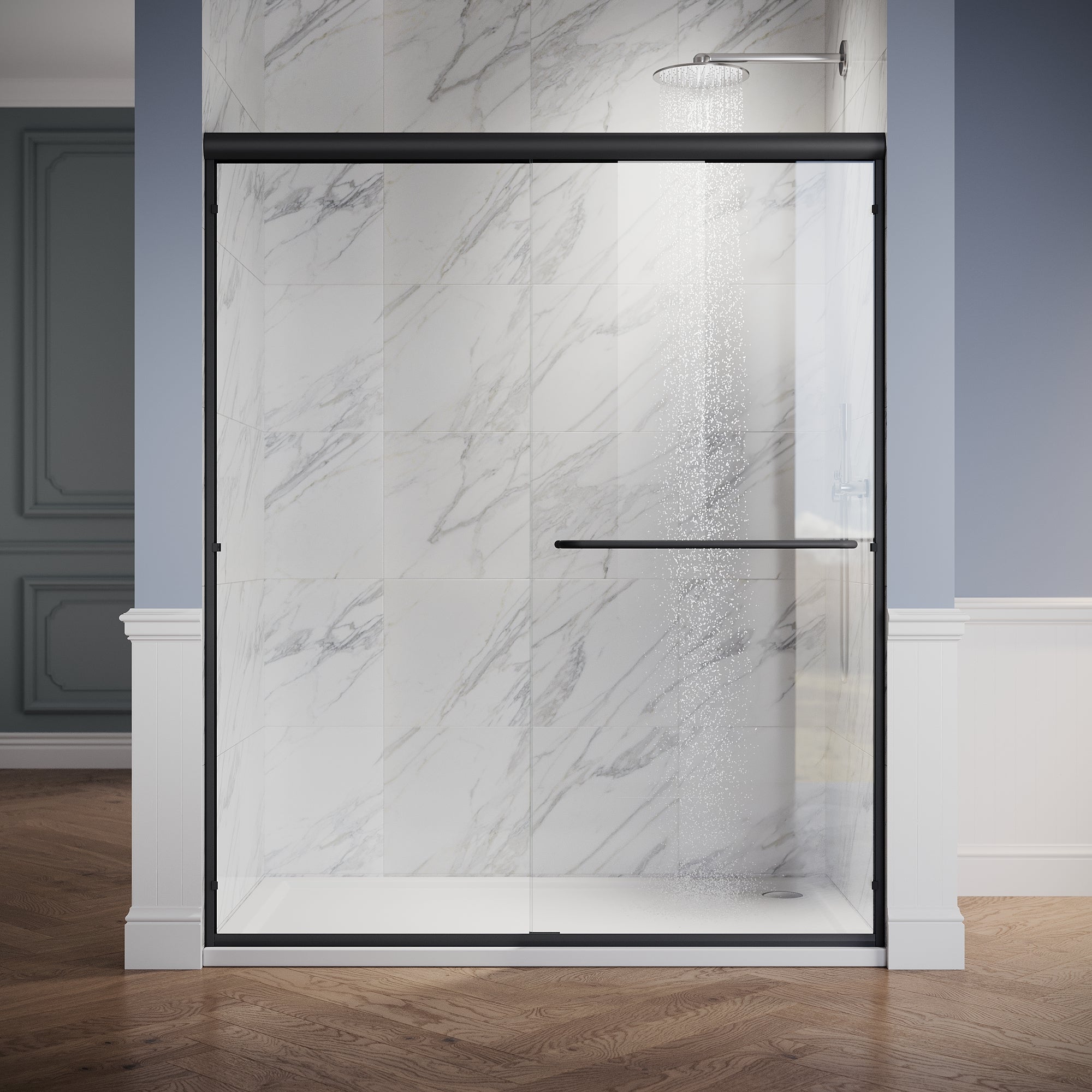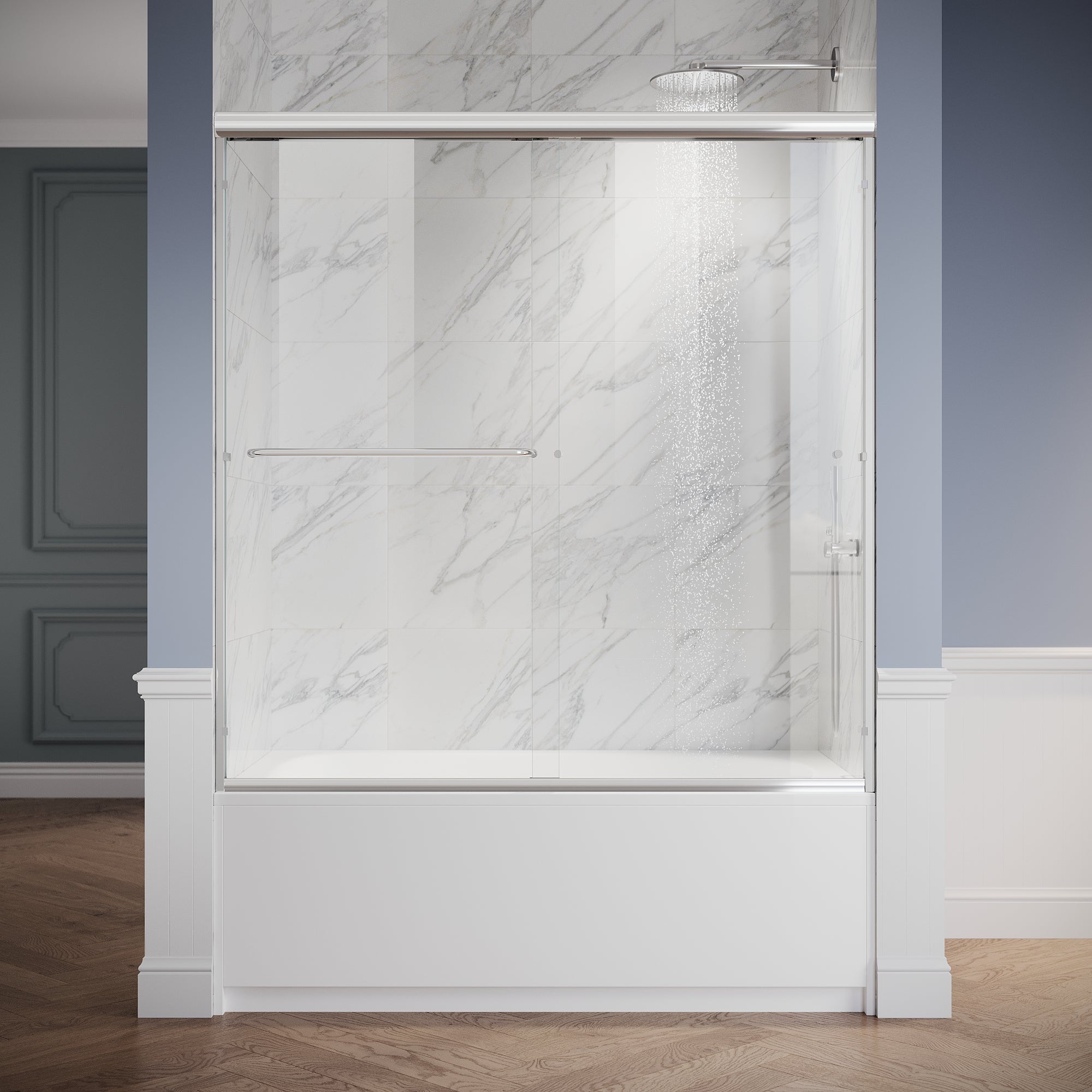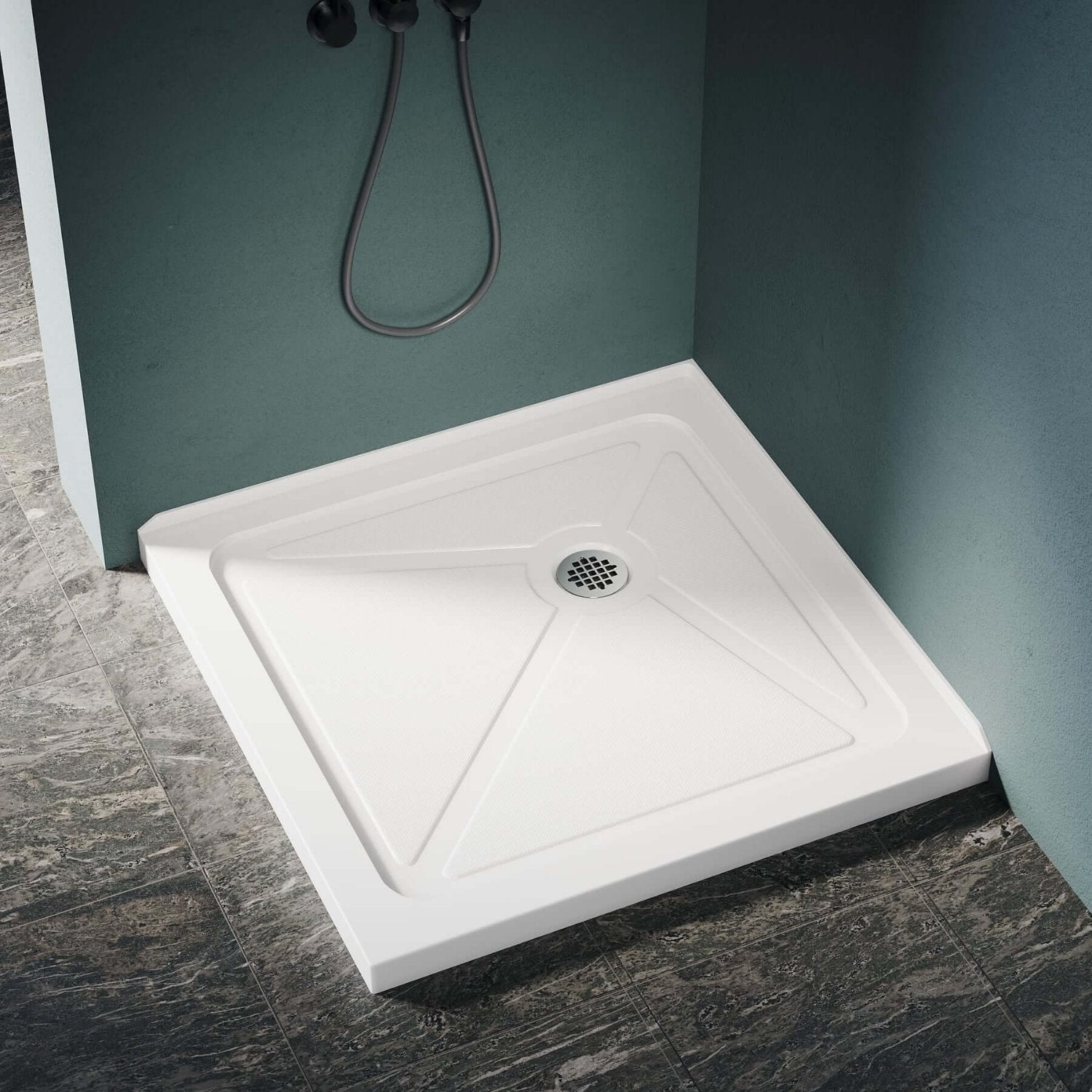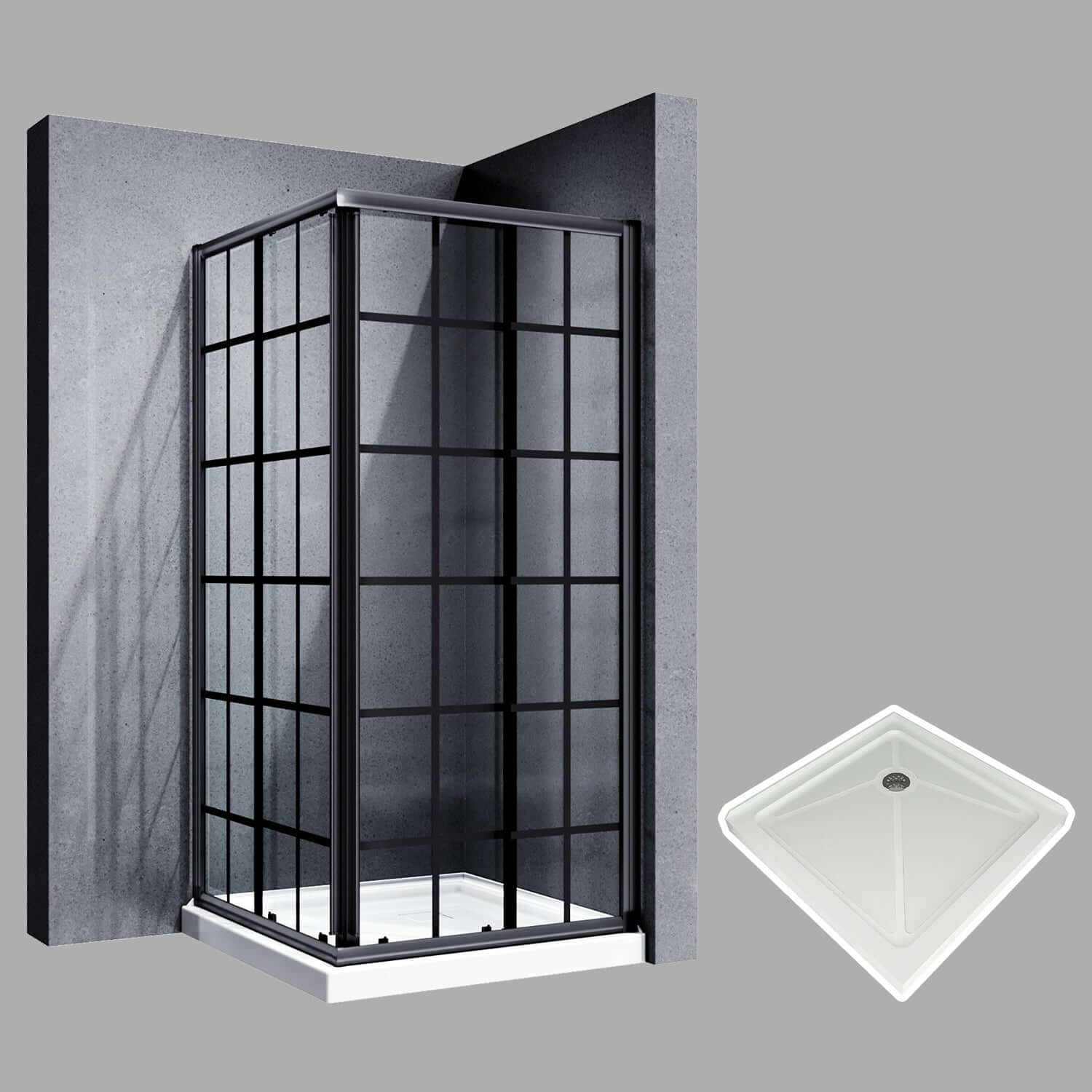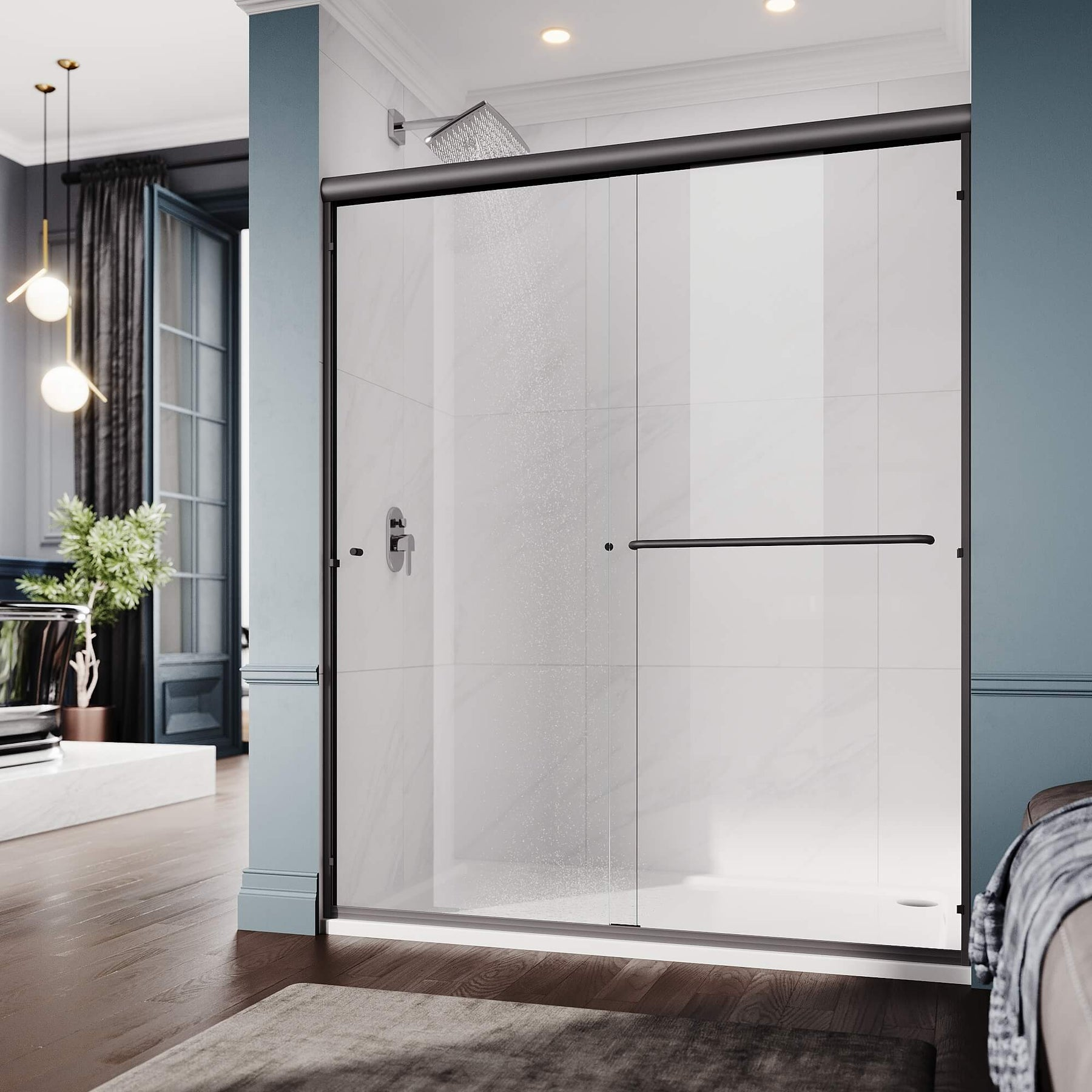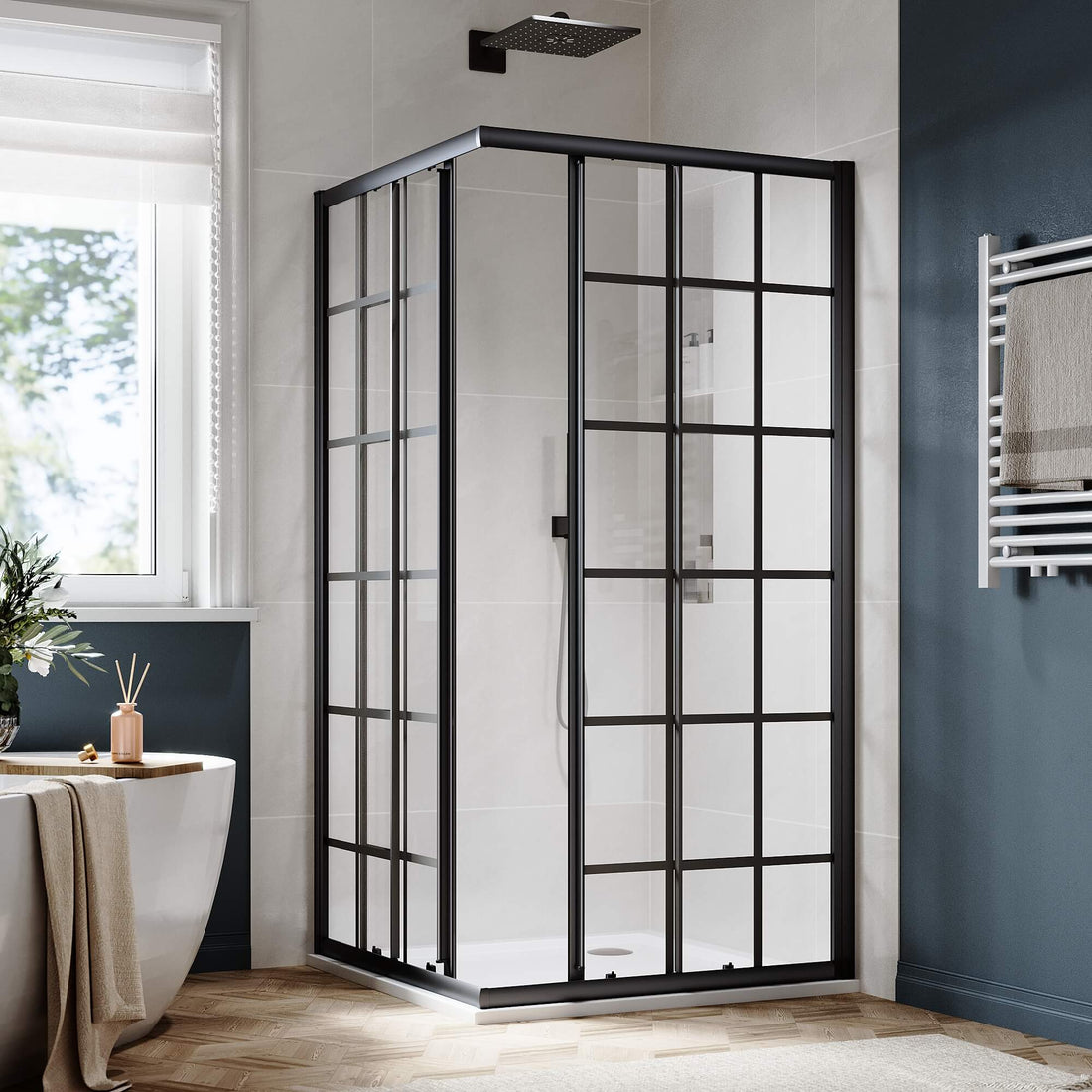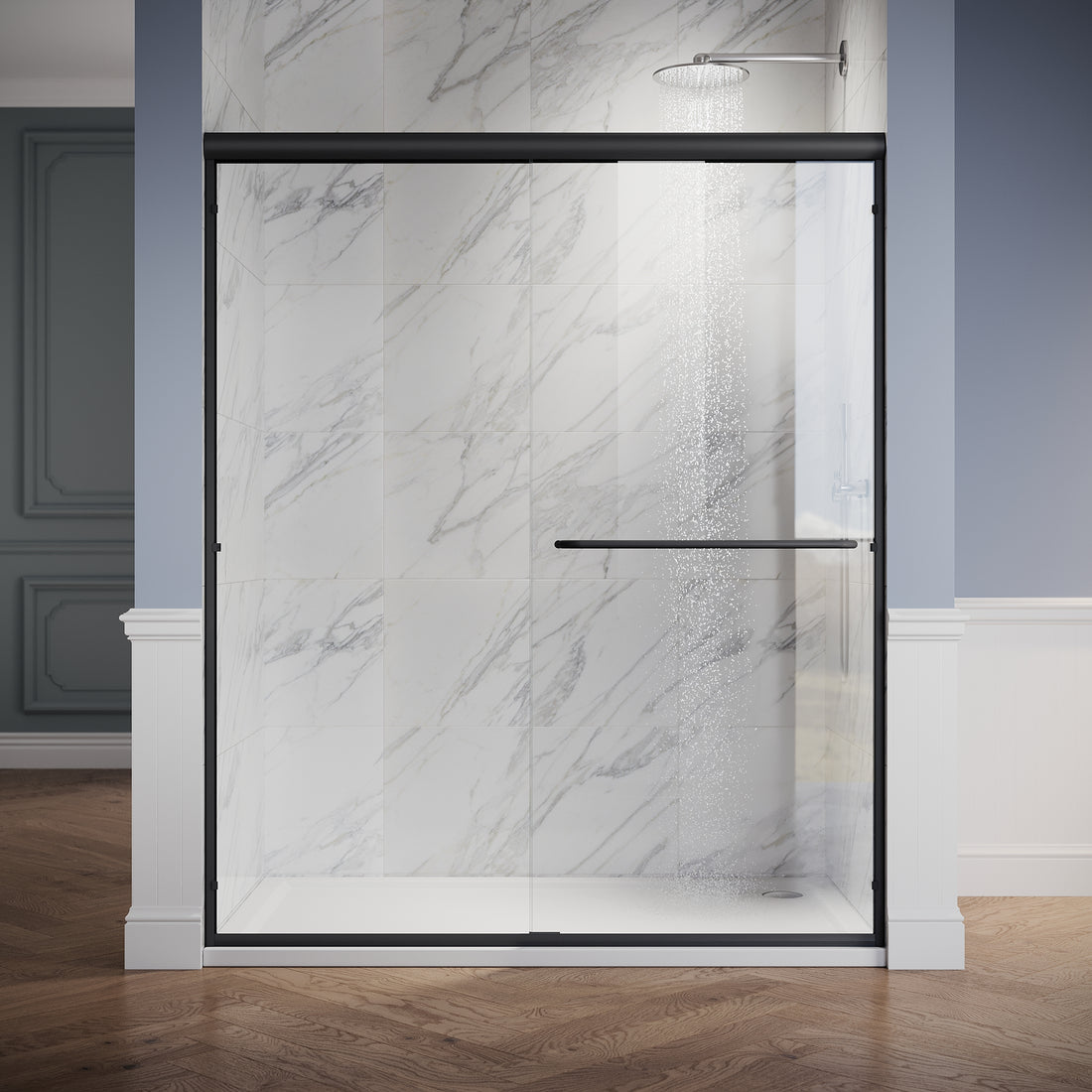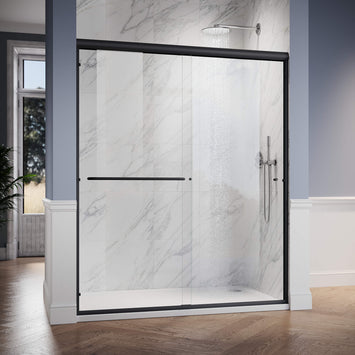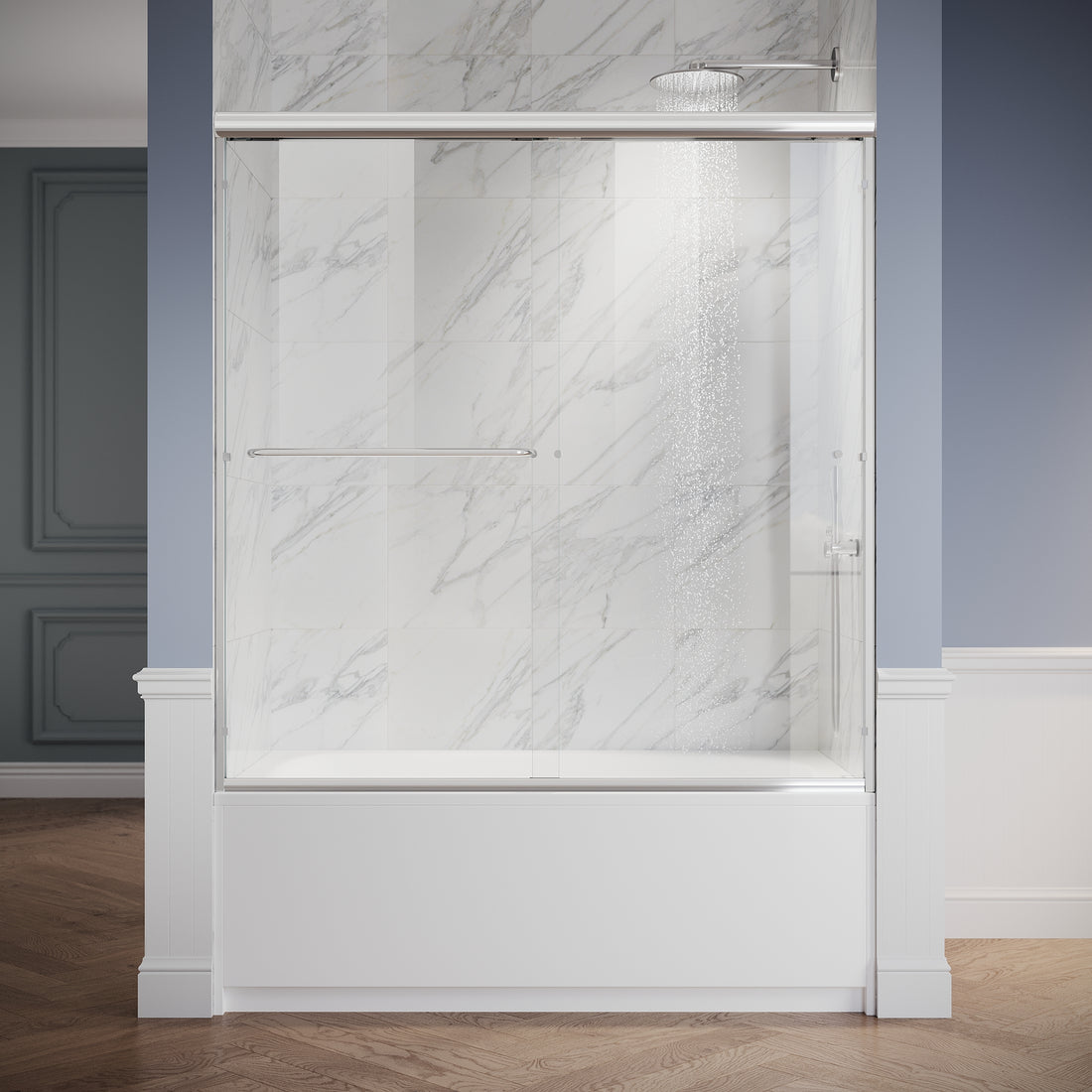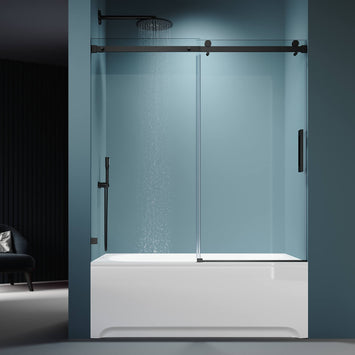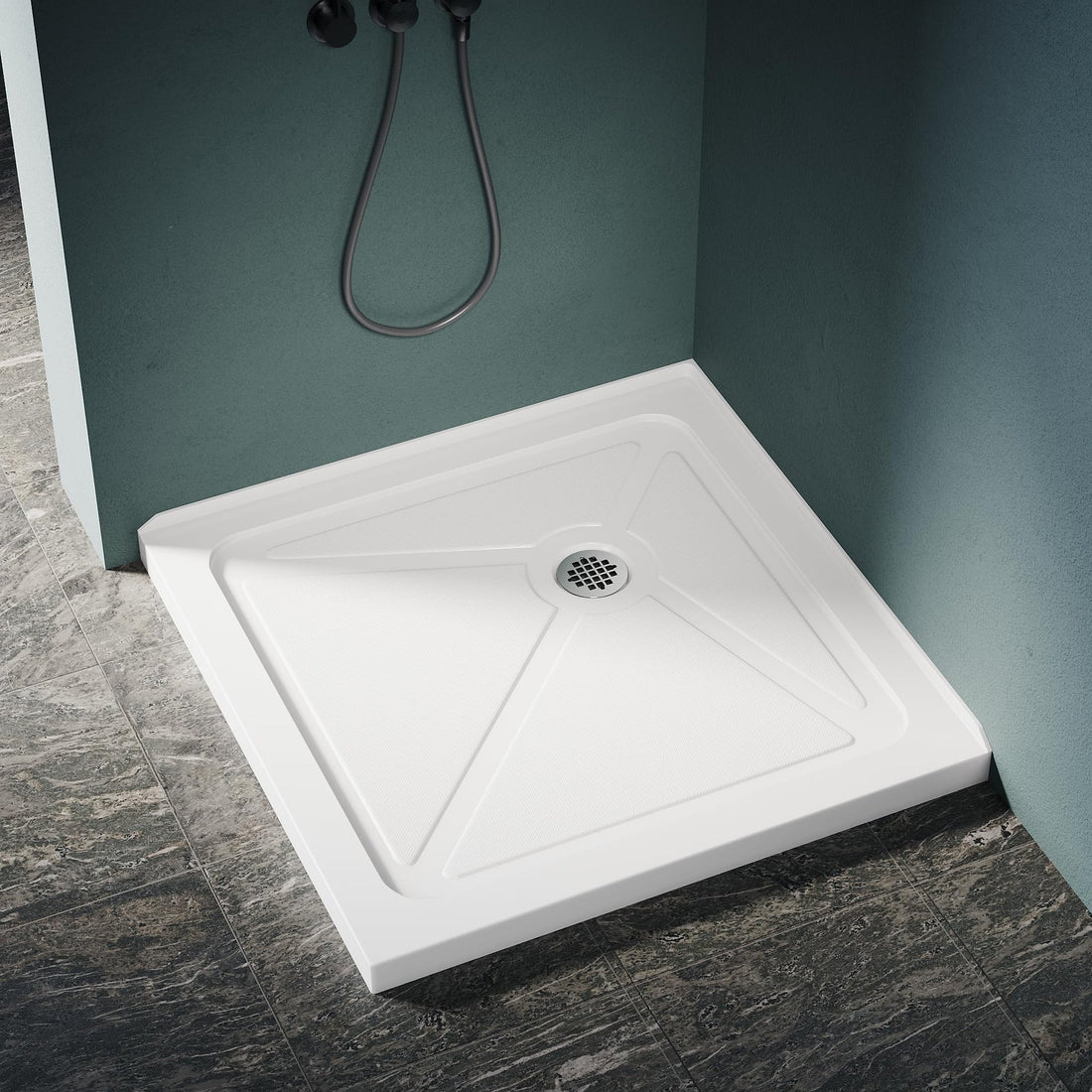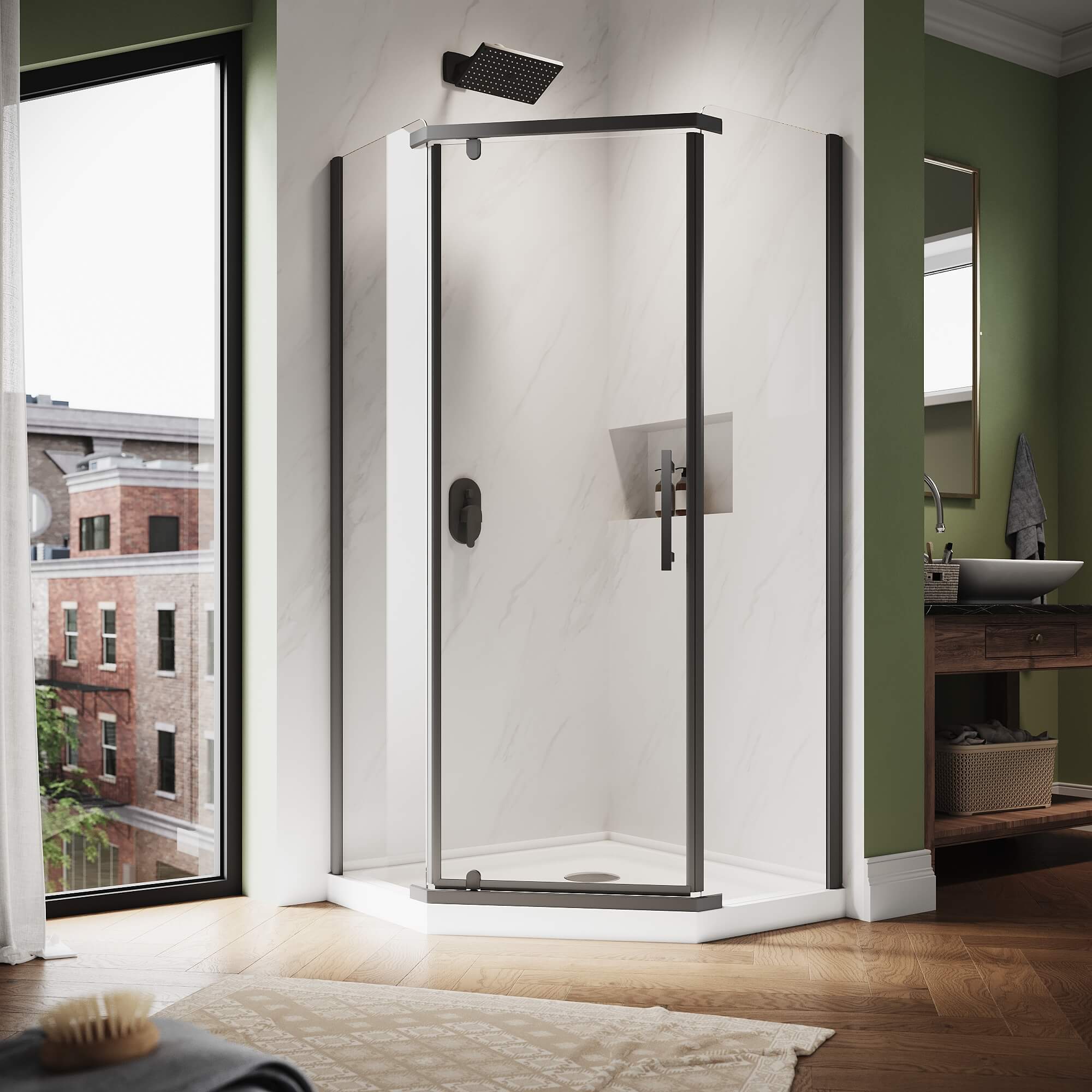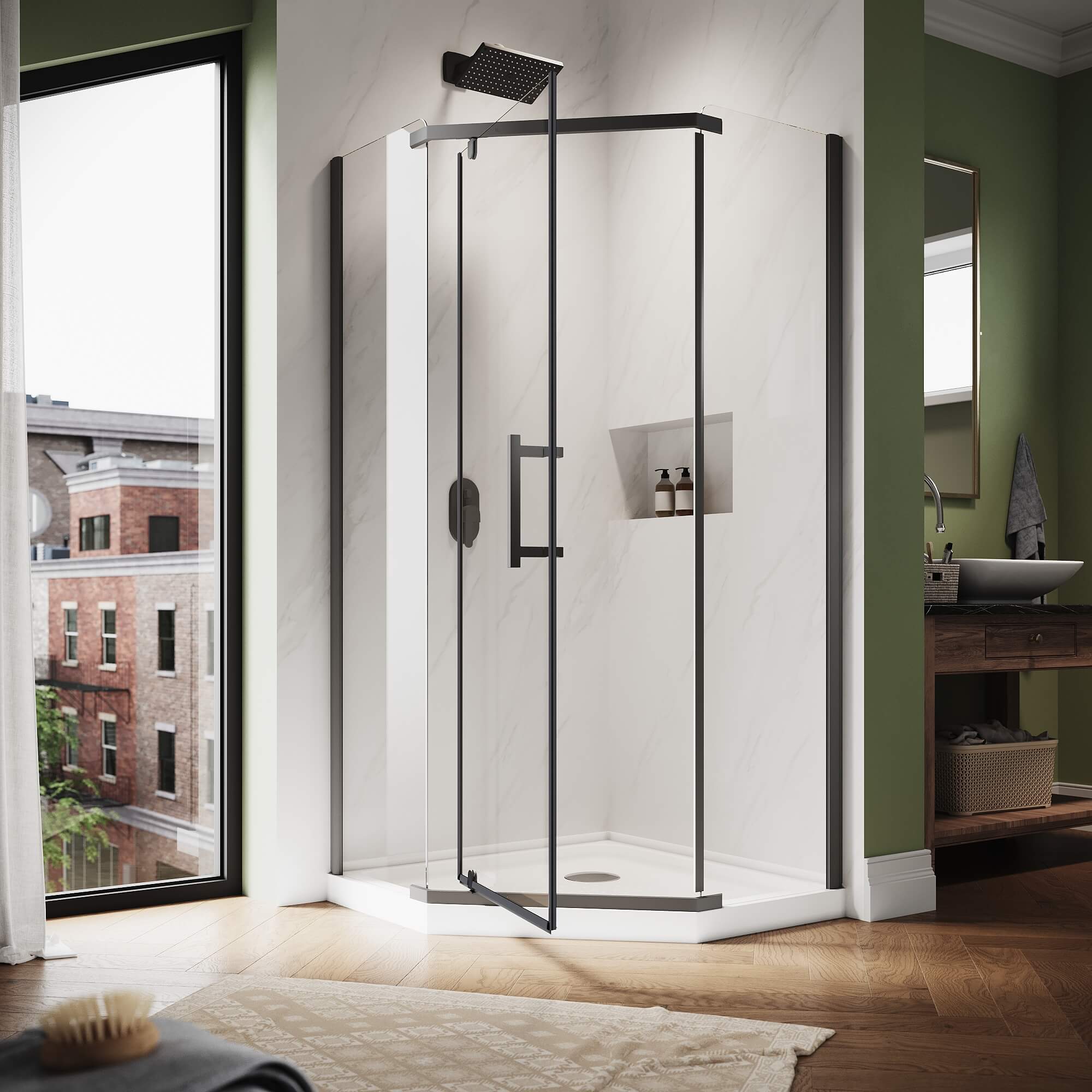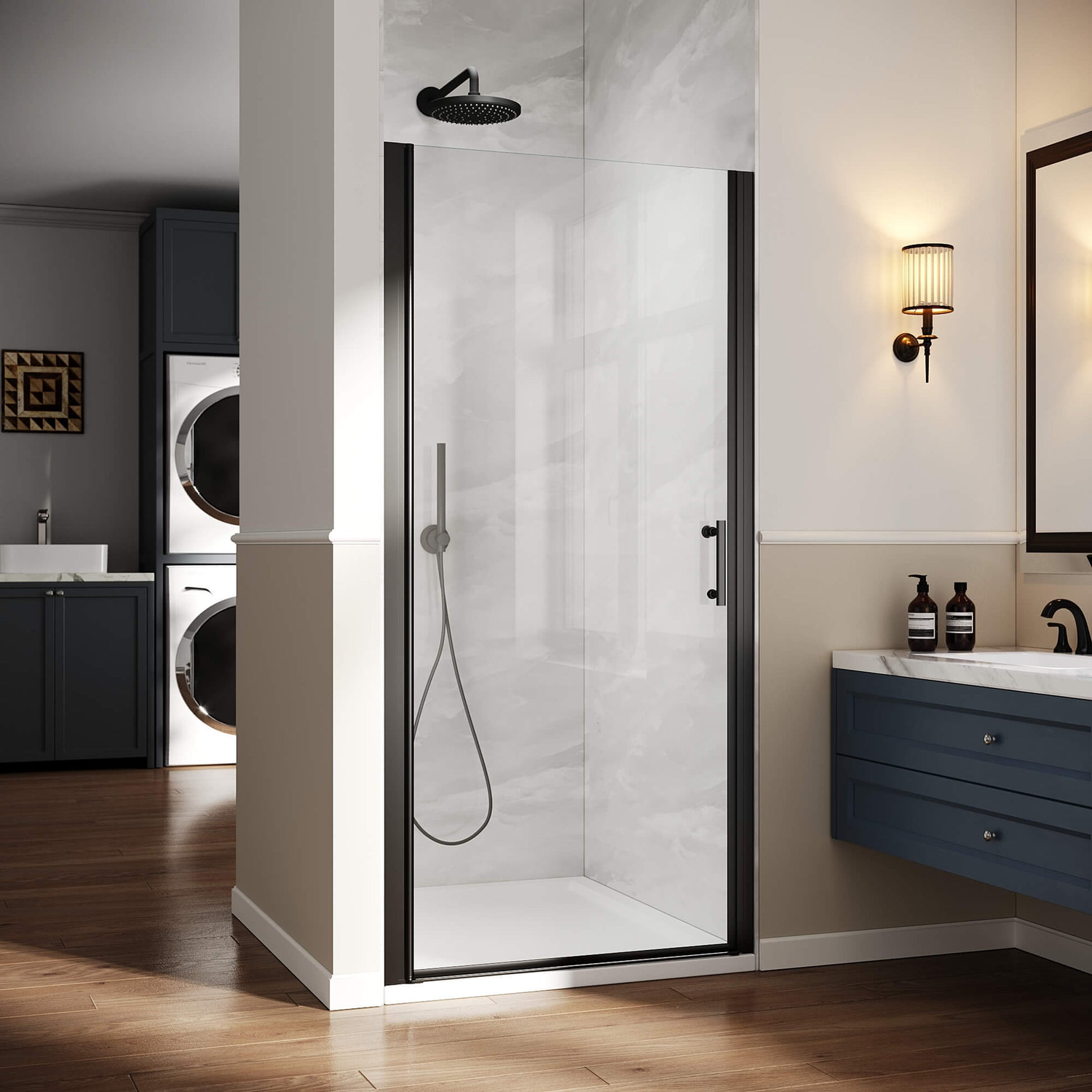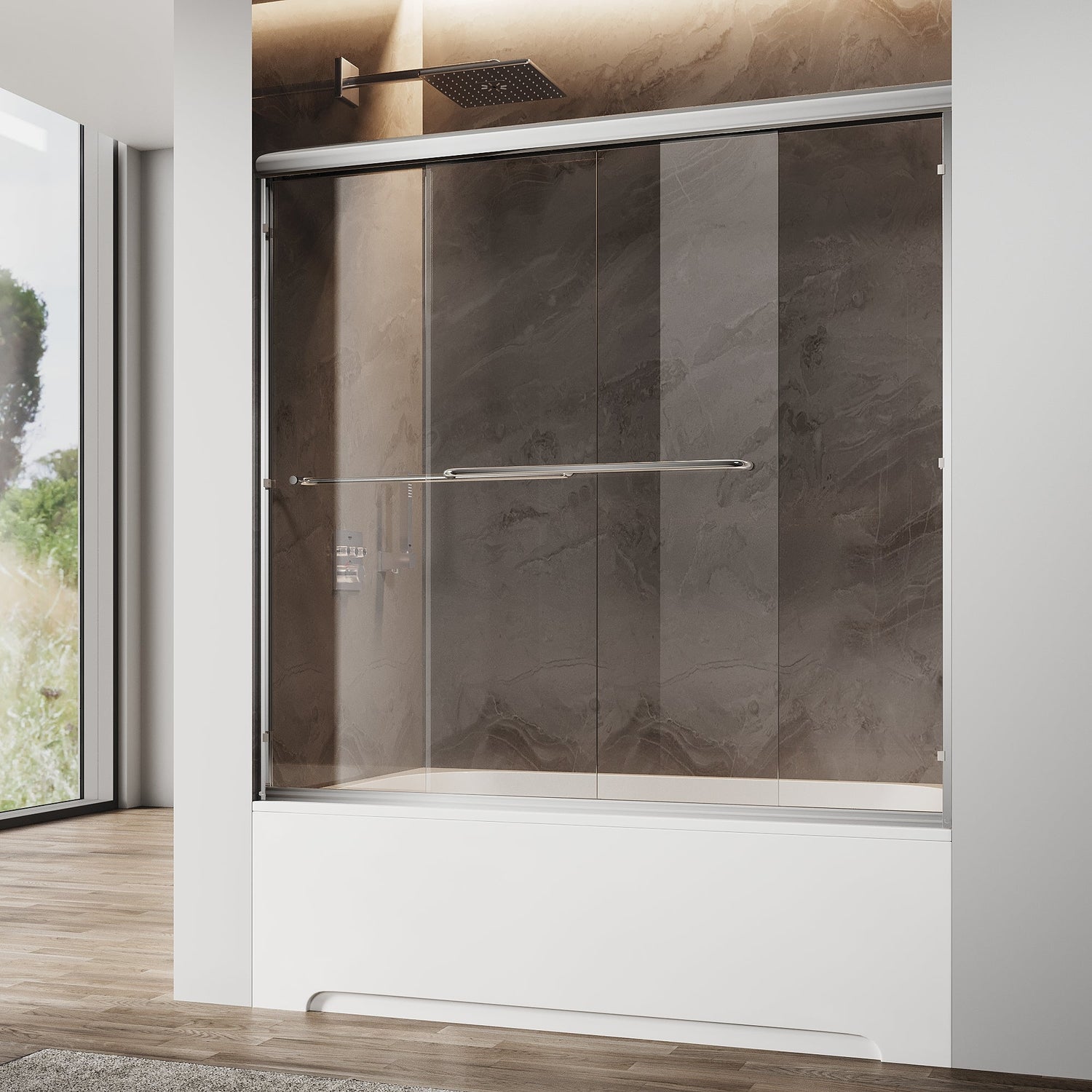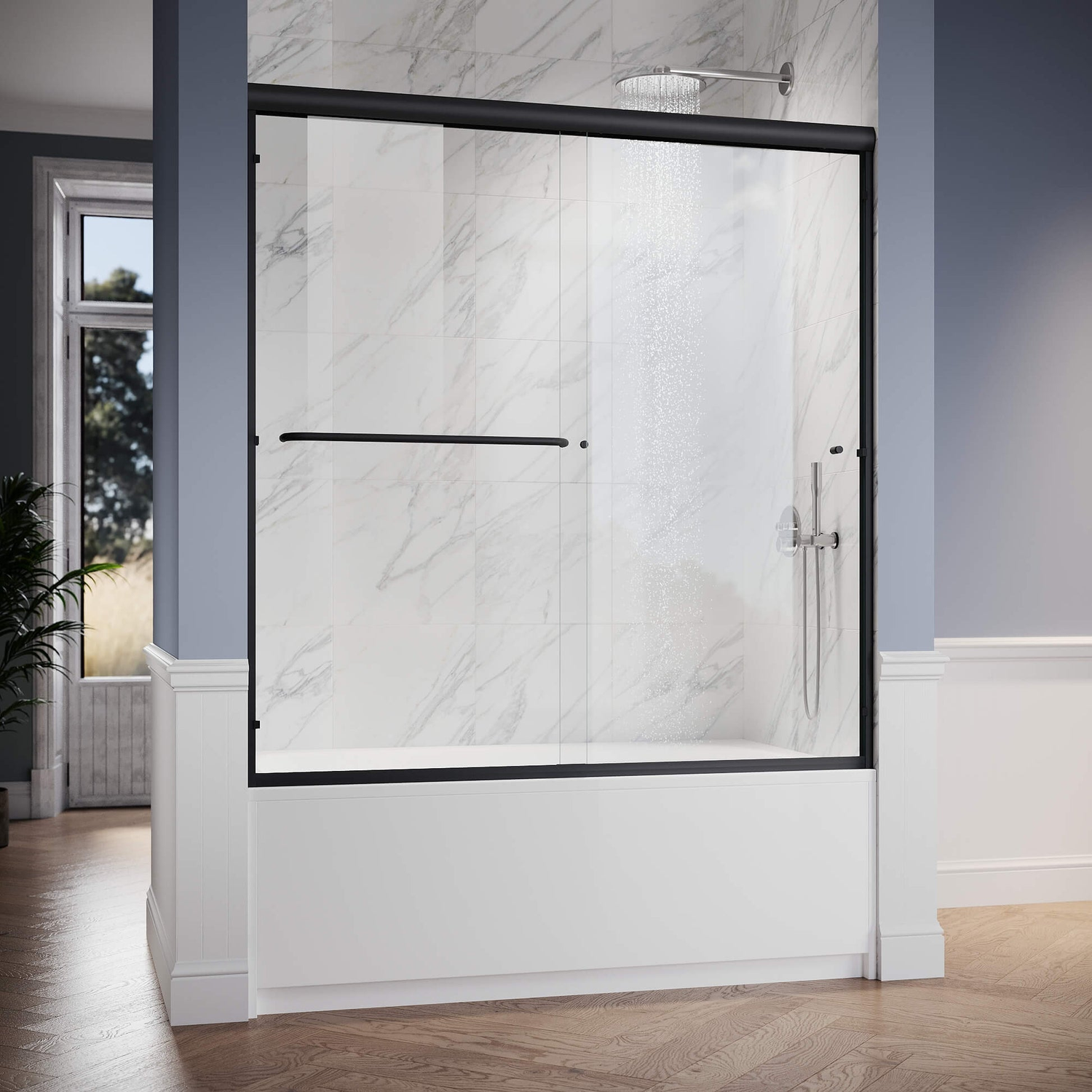New Arrivals
Traditional divides between personal and professional space.
Shop By Categories
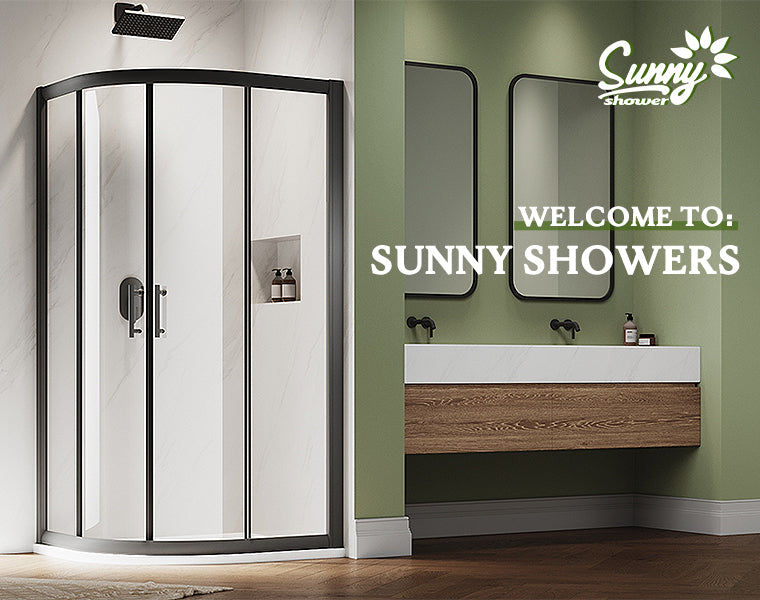
WHO ARE WE?
Sunny Showers has been dedicated to providing high-quality bathroom products to our customers, all at affordable prices.
As one of the USA’s leading online bathroom retailers, we offer a range of bathroom products including shower enclosures and shower doors, bathtub doors, shower base.
12353 Rush St, South El Monte, CA
We provide a competitive price to ensure you get the best deal for your ideal bathrooms.
With a global presence, we proudly serve customers internationally, with offices located in USA,AU, UK, DE and FR.
Blog
Walk-In Tub Shower Doors: A Complete Guide to Types, Pros, Cons & What to Look For
A walk-in tub starts with a low-threshold entry. That is the core access feature. But the door makes the system viable. It must hold back water under pressure and stay easy to use daily. The seal is the final gate that keeps the bathroom dry and the bather secure. Inward-swing doors compress against a gasket. Sliding doors rely on tracks, guides, and gaskets for a tight fit. This article clarifies door types, pros and cons, safety features, seal designs, and how to choose for the space and the user. Why Your Walk-In Tub Door Choice Matters The shower door is the primary barrier against leaks. Seal design and fit determine whether water stays in the tub or creeps out onto floors. Safety depends on the handle, latch, and swing. Stable, low-effort operation is essential for users with limited strength or balance. Door form also shapes the bathing experience. Inward-swing leaves take space inside the tub. Sliding panels clear the entry but add track care. The right choice reduces strain and boosts confidence at every use. Types of Walk-In Tub Shower Doors: Inward Swing vs. Sliding Both types can be built to seal well. They do it in different ways, and that changes how they feel, clean, and last. Inward Swing Shower Doors An inward-swing door opens into the tub space. When closed, it compresses a gasket against a rigid frame. As the tub fills, water pressure helps push the door tighter into its seal. That is a key advantage of inward designs. Most use a simple latch or lever handle. The motion pulls the door into the seal and keeps it there under load. Brands often pair this with a wider aperture for easier entry. Sliding Shower Doors A sliding door moves on a horizontal track. It stacks or overlaps with a fixed panel or nests into a pocket section. The system depends on rollers, guides, and aligned panels. Gaskets or sweeps bridge the gaps and help block splashes. Clean tracks and intact seals are crucial. If debris or wear appears, leaks and sticky motion rise. When set up well, sliding designs save space and look sleek. Walk-In Tub Shower Door Pros and Cons: A Comparative Analysis The trade-offs center on sealing strength, space, ease, and upkeep. Pick based on layout, mobility, and tolerance for maintenance. Pros and Cons of Inward Swing Doors Pros: · Strong sealing. Water pressure aids gasket compression for a robust, watertight closure. · Simpler mechanism. Fewer exposed parts and no external track reduce catch points for grime. · Cleaner edges. Without a track lip at the threshold, cleaning can be simpler around the door opening. Cons: · Uses tub space when open. The leaf swings inward and can make the inside feel tighter. · Maneuvering can be tricky. Transfers and seat positioning may need practice to avoid bumping the leaf. · Clearance planning is vital. Fixtures and walls must allow a full swing and safe approach. Pros and Cons of Sliding Doors Pros: · Saves space. No swing into the tub or bathroom. The opening stays clear for transfer. · Easy access. The threshold can be low and the panel stack leaves room for feet and aids. · Modern look. Clean lines suit shower-tub combos and compact rooms. Cons: · Track cleaning is ongoing. Soap scum and mildew collect and need regular attention. · More leak points. Worn sweeps, misaligned panels, or caulk gaps increase drip risk over time. · More complex parts. Rollers and guides may need adjustment or replacement. Essential Safety Features for Walk-In Tub Shower Doors Safety starts with access and ends with reliable closure. Look for features that speed help, improve grip, and resist impact. · Quick-release or exterior access: Allows helpers to open the door from outside in an emergency, complementing fast drains and grab bars. · Textured, ergonomic handles: Reduce slip and help users with arthritis or weak grip operate the latch. · Secure yet easy latches: Low torque to lock, strong hold under pressure to keep the seal stable while filled. · Shatter-resistant panels: Tempered glass or durable acrylic composites improve impact safety and durability. Tempered safety glass is common. It is stronger than regular glass and crumbles into dull beads if it breaks. That reduces injury risk near wet floors and hard surfaces. Acrylic panels are lighter and budget-friendly but scratch more easily. Tempered glass stays clearer and resists scratches and wear. How Walk-In Tub Shower Door Seals Prevent Leaks A good door uses layered defense. Start with a compression gasket. Add sweeps or lips at edges. Keep the frame square and the caulk intact. · Compression gaskets: In inward-swing doors, these seal as the latch pulls the panel into the frame. Water pressure adds force once filled. · Magnetic seals: Magnets help align and hold the closure, improving contact along the edge while keeping operation light. · Track gaskets and sweeps: In sliding doors, silicone or rubber edges block splash and channel runoff inside the enclosure. · Clean and inspect: Debris, hard water, and soap film can break the seal line. Wipe gaskets and tracks to maintain flexibility and contact. Magnetic seals are popular because they close with a light touch and form a reliable, uniform line of contact. They are used on hinged and sliding systems and are easy to replace when worn. Some walk-in tubs also use magnetic edges to reduce leak paths at latches and vertical joints. Regardless of type, proper installation is critical. Doors need plumb frames, level sills, and well-tooled caulk beads to resist capillary leaks. Compatibility Guide: Choosing a Shower Door for Your Bathroom Layout Plan the door around the room. Measure twice. Think about movement, plumbing, and service access later. · Layout and swing: If picking an inward door, confirm that it opens fully without striking toilets, vanities, or walls. Confirm safe foot placement during entry. · Model-specific fit: Walk-in tub doors are not universal. The hinge points, latch geometry, and seal channels are model-specific. · Plumbing position: Check faucet stacks, diverters, and showerheads. Avoid conflicts with the door path and handle reach. · Professional installation: Level and plumb matter. A crooked tub or frame can cause leaks, sticky latches, and premature seal wear. Leveling is a must. A tub must be supported and true, so water drains to the intended outlet. Shims or mortar set beds help achieve a stable, level base that protects seals and doors. After setting, caulk joints need even, continuous beads. Breaks or voids will wick water. Returns and warranties often require certified installers. That protects both safety and coverage. Walk-In Tub Shower Door Buyer’s Checklist · Measure the space. Decide if a swing leaf fits or if a sliding panel is better for the room. · Choose the trade-off. Pick maximum seal confidence with inward swing or maximum open clearance with sliding. · Verify safety features. Look for quick-release or exterior access, textured handles, and easy but secure latches. · Confirm materials. Tempered glass or robust acrylic panels should meet safety needs and maintenance preferences. · Inspect seals. Ask about compression, magnetic edges, gaskets, and expected service intervals or replacements. · Check warranty terms. Focus on door, frame, hardware, and seal coverage, plus maintenance requirements. · Read performance reviews. Filter for leak control, latch feel, track cleaning, and long-term alignment. · Confirm model compatibility. Match the door to the exact tub model and drain orientation. · Plan pro installation. Require level, plumb, and properly caulked assemblies with documented commissioning. Practical Maintenance Tips for Walk-in Tub Shower Doors A clean door seals better. Maintenance also preserves warranties and keeps operation smooth. · Wipe gaskets weekly. Use mild soap and a soft cloth to remove film that can break seal contact. · Clean tracks often. Lift debris from channels and weep holes to prevent pooling and mildew. · Inspect sweeps and magnets. Replace worn edges, cracked PVC, or weakened magnet pairs promptly. · Check alignment. If sliding action scrapes or binds, adjust rollers and guides to restore even contact. · Re-caulk when needed. If caulk splits or peels, cut out and apply a continuous bead after surfaces are dry. Tempered glass benefits from gentle, non-abrasive cleaners. That protects clarity and reduces micro-scratches that hold grime. Acrylic needs even softer care to avoid marking the surface. Installation Notes That Prevent Leaks Good hardware cannot overcome bad setup. A few steps protect the seal for years. · Level the tub. Use shims or mortar beds as needed. Verify with a long level on multiple axes. · Square the frame. Plumb uprights and true horizontals preserve uniform gasket contact. · Torque hardware evenly. Over-tightening can warp frames; under-tightening causes play. · Tool the caulk bead. Ensure continuous, smooth coverage at all edges and penetrations. · Test under use. Fill the tub, run the shower, and check seals, corners, and tracks for weeping or drips. A final check of latch effort matters. It should lock with light hand force but hold tight under water pressure. If not, adjust to spec and retest. When to Prefer Each Door Type Context narrows the decision. A few cases help clarify the pick. · Small bathrooms: Sliding doors avoid swing conflicts and keep walk paths clear. · Maximum watertight priority: Inward swing doors gain seal strength from water pressure. · Minimal maintenance: Inward designs have no track to scrub, reducing daily cleaning. · Mobility aids and transfers: Sliding panels can provide a larger, unobstructed opening. · Modern shower-tub combos: Sliding glass aligns with a sleek, frameless look. Whichever type is chosen, commit to proper installation and care. That is what preserves performance over time. Conclusion: Making an Informed Decision for Safety and Comfort The door is central to the system. It controls water, supports safe entry, and shapes daily ease of use. The core trade-off is clear. Choose inward swing for stronger, pressure-aided sealing. Choose sliding for space efficiency and a clear opening. Use the checklist. Confirm space, safety features, seals, compatibility, warranty terms, and professional installation to match the door to the bathroom and the user’s needs. For more bathtub shower door options and professional guidance, visit Sunny Shower Online Shop to compare solutions with a consultant and build a system that supports independence and safety for years to come.
How to Clean Shower Door Hard Water Stains
Hard water stains are mineral deposits. They form when water evaporates and leaves behind calcium and magnesium salts that calcify into limescale on glass. The result is a cloudy shower door that resists typical bathroom cleaners and keeps spotting even after scrubbing. This guide explains fast DIY methods, commercial treatments, and prevention tactics so the glass looks new and stays that way. Keywords used naturally: clean shower door hard water stains, hard water buildup, cloudy shower door. Understanding Your Enemy – What Are Hard Water Stains? Before we dive into the solutions, it’s crucial to understand what we’re dealing with. Knowing your enemy is the first step to defeating it. What Causes Hard Water Stains on Shower Doors? Hard water carries dissolved minerals. When droplets sit on glass and evaporate, dissolved ions turn into solid deposits that adhere to the surface. The main culprit is limescale, which is mostly calcium carbonate along with other mineral deposits that create rough, white crusts and opaque patches. This buildup progresses from faint water spots to a cloudy film and, if neglected, to stiff, etched-in deposits that take more effort and stronger chemistry to remove. Are Hard Water Stains or Soap Scum Clouding Your Glass? Mineral deposits look hard, crusty, and white. Soap scum is sticky, filmy, and often hazy, binding with body oils and residue on the glass. Most shower doors have both, which is why methods that dissolve minerals and cut through soap residue work best together. Keywords: mineral deposits, limescale, calcium carbonate, soap scum, cloudy shower glass. Essential Tools and Safety Precautions Gathering the right tools before you start will make the job smoother and more effective. What You’ll Need to Clean Hard Water Stains Safely · Microfiber cloths for lint-free wiping and buffing. · Non-scratch scrub sponges or a Dobie-style pad for safe scrubbing on glass. · Spray bottles for vinegar solutions and commercial cleaners. · Razor blade scraper for flat glass, used correctly at a shallow angle. · Plastic putty knife for scraping without risking edge chips on hardware or seals. · A small bucket for mixing solutions and rinsing tools. Safety matters. Work with ventilation, gloves, and eye protection, especially with acidic products like CLR or strong shower formulations. Always test in a hidden corner first to confirm compatibility with your glass and any protective coatings before full application. Tried & Tested DIY Cleaning Methods for Hard Water Stains For those who prefer natural, affordable, and effective solutions, these DIY methods are highly successful at tackling hard water deposit removal. The Ultimate Vinegar Solution for Hard Water Stains Acid dissolves alkali minerals. White vinegar is a mild acid that softens limescale and helps release soap scum along with dish soap if needed. How to Use Vinegar to Clean Shower Door Stains (Spray Method) · Warm white vinegar in the microwave to boost dissolving power, then pour into a spray bottle. · Spray glass generously, covering edges and handles where buildup hides, and let sit 30–60 minutes for heavy deposits. · Scrub with a non-abrasive pad, then rinse thoroughly with warm water to lift dissolved minerals and residue. · For mixed residue, use a 1:1 vinegar and dish soap spray, let sit, wipe to lather, then rinse clean and squeegee dry. This approach is gentle but effective. It is a strong first step for most cloudy shower doors before trying stronger products. The Powerful Vinegar and Baking Soda Paste Method A paste adds controlled abrasion plus acid action. The fizz helps lift soil from micro-texture on the glass. · Mix baking soda with a small amount of vinegar or water to form a spreadable paste. · Apply to stained areas and let sit 15–20 minutes so the acid can work under the paste. · Scrub with a soft sponge using light pressure, then rinse well to flush residue and loosened scale. The paste is helpful when spray vinegar alone does not clear stubborn rings and cloudy bands near the splash zone. The Overnight Vinegar Soak for Stubborn Stains Contact time matters. Soaking keeps the surface wet with acid and helps dissolve thick mineral deposits. · Soak paper towels or cloth strips in vinegar and apply them to the glass, pressing for full coverage of stubborn patches. · Leave in place overnight for severe hard water buildup that resists standard dwell times. · Remove the pads, scrub lightly with a non-scratch sponge, and rinse thoroughly before drying. Use this for etched-looking haze and white crusts that persist in corners and along door edges. Using CLR (Calcium, Lime, and Rust Remover) Effectively CLR is a commercial acid blend formulated to dissolve calcium, limescale, and rust faster than household vinegar. Use in a well-ventilated area, dilute 1:1 with warm water, test an inconspicuous spot, and limit contact to 2 minutes before rinsing thoroughly with cold water. Do not mix with other cleaners and avoid use on sensitive coated glass or certain metals and stones noted by the manufacturer. CLR is powerful for thick mineral deposits but requires careful handling and quick rinsing to protect surfaces. Alternative Natural Solutions for Hard Water Stains While vinegar is the reigning champion of DIY cleaning, it’s not the only natural player on the field. If you’re out of vinegar, prefer a different scent, or are dealing with a particularly tricky type of buildup, these alternative natural solutions for hard water stains are equally worthy of a spot in your cleaning arsenal. These methods leverage the power of other common household items to dissolve mineral deposits and restore shine without harsh chemicals. Cleaning Shower Doors with Lemon Juice Lemon juice contains citric acid, which works similarly to vinegar and adds a pleasant scent. Halve a lemon, dip the cut side in borax or fine salt for safe abrasion, scrub the door with gentle pressure, and let sit for 10 minutes before rinsing. This method is effective for lighter mineral haze and soap film near daily splash zones. The Bar Keeper’s Friend Soft Cleanser Method Bar Keeper’s Friend uses oxalic acid in some formats; the Soft Cleanser version offers a non-abrasive option suited to glass. Apply a small amount to a damp cloth or sponge, rub in circular motions on hazy areas, and rinse completely to avoid streaking as it dries. This is a solid middle-ground step when vinegar underperforms but a strong acid like CLR is not yet necessary. How to Remove Stubborn Hard Water Stains with a Razor Scraper A sharp razor scraper can shear off mineral scale. It must be used gently to avoid scratching the glass or catching hardware. · Keep the glass wet with water or vinegar during scraping to lubricate the blade. · Hold the blade at a shallow angle and apply steady, even pressure, moving in long strokes on flat glass only. · Avoid edges, seals, and labels; switch to a plastic putty knife in tight areas to reduce risk. Follow with a vinegar rinse and a microfiber buff to remove streaks and fine residue after scraping. Drying and Buffing for a Perfect, Streak-Free Shine After any method, rinse thoroughly, then squeegee from top to bottom to remove water. Finish with a dry, clean microfiber cloth to buff remaining moisture and produce a clear, streak-free finish. Drying also prevents immediate new spots as minerals would otherwise redeposit during evaporation. How to Prevent Hard Water Stains on Shower Doors The best way to clean shower door hard water stains is to never let them form in the first place. A simple, consistent routine is your best defense. How to Prevent Hard Water Buildup on Shower Doors Prevention is faster than deep cleaning. Small daily and weekly habits, plus protective coatings, keep glass clear far longer. The Daily Squeegee Habit A daily squeegee is the single most effective step. Removing water immediately prevents minerals from drying on the glass at all. One minute after each shower saves hours of scrubbing later and keeps hard water buildup minimal. Using a Water Repellent Treatment Apply a water repellent made for shower glass to help water bead and roll off instead of clinging and drying into spots. Rain-X Shower Door Water Repellent can prevent new hard water stains and soap scum for weeks per label, and some users report protection lasting months with good care and ventilation. Reapply as directed to maintain the hydrophobic barrier and keep the cloudy shower door look at bay. Improving Ventilation Run the bathroom fan during and after showers to reduce humidity and speed drying, or open a window if available. Better airflow removes moisture quickly so water does not sit and evaporate on the glass with minerals intact. Weekly Wipe-Down Routine Once a week, wipe the door with a vinegar-and-water mix to neutralize early deposits and soap residues before they harden. Follow with a microfiber buff and the squeegee to finish dry and streak-free. Consider a Water Softener A whole-house water softener reduces calcium and magnesium at the source, cutting the rate of mineral deposits across all fixtures. Softening helps the entire bathroom stay cleaner and reduces how often strong acid cleaners are needed for the shower. Step-by-Step Cleaning Plans Use these targeted workflows to clean shower door hard water stains efficiently and safely based on severity. · Light haze and water spots: Spray warm vinegar, dwell 20–30 minutes, scrub lightly, rinse, squeegee, microfiber buff, then apply water repellent when dry. · Moderate cloudiness with soap scum: Use a 1:1 vinegar and dish soap spray, dwell 10–15 minutes, wipe to lather, rinse, then treat stubborn patches with a baking soda paste before final rinse and dry. · Heavy limescale bands: Apply an overnight vinegar soak on towels for thick patches, scrape carefully with a wetted razor on flat glass as needed, then rinse and finish with Bar Keeper’s Friend Soft Cleanser for polishing. · Severe mineral crusts: Use diluted CLR per label for up to 2 minutes on compatible surfaces, rinse thoroughly, then follow with vinegar to neutralize residue and apply water repellent after drying. These sequences escalate carefully. Start mild and move to stronger steps only where needed to protect coatings and reduce risk. Troubleshooting Common Issues If vinegar alone does not clear deposits, extend dwell time or switch to a paste and gentle abrasion before stepping up to commercial acids. If streaks persist after rinsing, squeegee first, then buff dry with a clean microfiber to eliminate film and water lines. If deposits seem etched, use a soak and scraping combo, then consider professional polishing if permanent etching is suspected. Always check that any cleaner is compatible with coated glass, when in doubt, test first and default to milder methods. Safety Notes and Surface Compatibility Strong acids work fast but require care. Limit contact time, ventilate well, and avoid mixing products to prevent harmful reactions. Many manufacturers warn against using CLR on natural stone, certain metals, and coated glass; follow labels precisely and protect nearby surfaces with towels or plastic sheeting. Razor scrapers should only be used on flat glass and never on acrylic or textured panels to avoid scratching. Maintenance Habits That Keep Glass Clear Set a simple routine. Squeegee after each shower, buff once daily if possible, and wipe weekly with a vinegar-water spray to reset the glass. Reapply water repellent on a set schedule for consistent beading and easy cleanups between deep cleans. Keep tracks, seals, and metal trims wiped to prevent drip-back and mineral streaks from edges onto the door. Conclusion Restoring clarity to a cloudy shower door is achievable with the right plan. Natural DIY methods like warm vinegar sprays, vinegar-and-baking-soda pastes, and lemon-based scrubs dissolve mineral deposits and soap scum without harsh fumes or long scrubbing sessions. For heavy hard water buildup, careful use of CLR or a specialized shower glass cleaner removes stubborn limescale quickly when used as directed and rinsed well. Prevention matters most. For more shower door solutions and guidance from a professional consultant, visit Sunny Shower US Online Shop to explore products that restore and protect shower glass long-term.
How Much Do Bathtub Shower Doors Really Cost? (Installation Included)
Bathtub shower doors play a big role in how a bathroom looks and works. They keep water in the tub, reduce cleanup, and add a clean, modern feel to the space. When planning an upgrade, one of the biggest questions is cost—both for the door itself and for professional installation. Prices vary based on the shower door type, glass quality, thickness, hardware, and the complexity of the installation. Labor rates and regional differences also affect the total. This guide breaks down what influences price, shares current national averages, and explains where costs can creep up or down. The goal is simple: help homeowners budget smartly, compare options, and choose the right bathtub shower door without surprises along the way. What Are Bathtub Shower Doors? Types and Styles Explained Bathtub shower doors are glass panels mounted on top of a bathtub to enclose a shower, replacing the need for a curtain. They improve water containment, brighten the room, and create a durable, easy-to-clean barrier. Types: · Sliding doors: Two or more glass panels that glide on tracks, ideal for tubs with limited clearance. · Pivot doors: Swinging doors on hinges, better for wider clearances and straightforward access. · Bi-fold doors: Panels that fold inward, useful in tight spaces where a swing door won’t fit. Styles: · Framed: Full metal frames around glass; most budget-friendly. · Semi-frameless: Minimal metal around perimeter; a middle-ground on cost and style. · Frameless: Thicker glass with clips/hinges, no frame; cleanest look and highest cost. These types and styles apply to tub-mounted enclosures as much as standalone showers, though tub installs may use shorter heights and specific track systems. Bathtub Shower Door Costs: A Quick Overview · National average for a glass shower door with professional installation typically falls around $900–$1,000, with common ranges from about $530–$1,400 depending on type, size, and options. · For tub-specific installs, expect approximately $400–$1,000 total depending on framed vs. frameless, condition of the tub surround, and the opening width. · Low-end examples: Basic framed sliding tub doors in standard sizes can land in the $400–$700 range installed. · High-end examples: Custom frameless with premium hardware and thicker glass can run $1,400–$3,300+, even for tub openings, particularly if site conditions add complexity. These figures reflect current 2024–2025 consumer guides and cost calculators that include both materials and typical labor. Material Costs Breakdown: Glass Types for Shower Doors Glass is the biggest material driver. Prices vary by clarity, privacy, safety layers, and thickness: · Clear glass: Standard choice with a neutral look and the best light transmission; most cost-effective. · Frosted/patterned glass: Adds privacy and a decorative effect; typically, a step up in price. · Tempered glass: The safety standard for shower doors; it breaks into small granular pieces rather than sharp shards and is considered baseline for most products. · Laminated glass: Two glass layers with an interlayer for extra safety and sound dampening; higher cost, often used in premium or specialty designs. · Low-iron glass: Ultra-clear (reduced green tint), premium aesthetic; adds a noticeable price bump. · Thickness: 3/8" is a common standard for higher-end and frameless looks; 1/2" is premium and heavier, increasing cost and installation difficulty. Cost per square foot: · Typical shower glass runs roughly $12–$50/sq ft depending on type and thickness, with frosted/patterned, laminated, and low-iron at the higher end of the range. · Low-iron glass often adds a premium upcharge, reflecting the market’s price step for extra clarity. Note: Final glass cost for a tub door depends on panel sizes and hardware system; larger openings and thicker glass increase both material and labor. Material Costs Breakdown: Frame Types and Hardware Frames and hardware affect both look and price: · Framed doors: Usually aluminum frames. Most affordable thanks to thinner glass and simpler mounting. · Semi-frameless: Limited metal around the perimeter, cleaner look than framed. Priced mid-range. · Frameless: No frame, using clips/hinges and thicker glass (often 3/8"–1/2"); premium price for the minimalist look. Hardware considerations: · Components: Hinges, handles, towel bars, rollers/tracks (for sliders), seals, and clips. · Materials: Stainless steel and solid brass hardware command higher prices and long-term durability. · Finishes: Chrome and polished options tend to be most economical; brushed nickel, matte black, and specialty finishes can cost more. · Channels vs. clips: Frameless doors mounted with low-profile U-channel may save $75–$200 compared with clip systems, though clips preserve the pure frameless aesthetic. Labor Costs: Professional Installation of Bathtub Shower Doors Average labor cost: · Typical labor for standard shower doors falls around $200–$600 depending on framed or frameless, with total installed averages around $900–$1,000 when combined with materials. · Home improvement retailers commonly start labor from about $200 for simpler installs, excluding the door cost. · Time-based rates are often $50–$100 per hour, with many installs taking 3–6 hours depending on door style and site conditions. Factors that affect labor: · Complexity: Out-of-plumb walls, tight alcoves, or corner layouts add time and skill requirements. · Location: Urban markets and high-cost-of-living regions typically have higher labor rates. · Contractor experience: Skilled glaziers or specialty bath installers may charge more but reduce risks of leaks, misalignment, or glass stress. Why professional installation helps: · Proper measuring, plumb adjustment, safe glass handling, and accurate sealing prevent leaks and premature wear. · Pros can address wall irregularities, ensure smooth operation, and protect warranties. These labor ranges align with national averages reported across consumer cost guides and retail installation programs. Key Factors That Cause Price Swings in Bathtub Shower Door Costs · Custom sizes: Non-standard tub openings require custom glass cutting and potentially special hardware, raising both material and labor. · Complexity of installation: Uneven or tiled walls, tight alcoves, or aging homes can add time and cost. · Glass type and thickness: Frosted/patterned, laminated, and low-iron glass increase material cost; 1/2" glass adds both material and handling complexity. · Frame style: Frameless designs require thicker glass and specialized hardware, increasing total price compared with framed and semi-frameless. · Additional features: Towel bars, protective coatings, premium rollers, and designer handles add line-item costs. · Geographic location: Regional labor rates and material pricing vary; calculators adjust for ZIP code to reflect local conditions. Each of these can push a project toward the low or high end of the price spectrum. Average Cost Ranges by Bathtub Shower Door Type Sliding doors (tub) · Standard framed sliders: About $250–$780 for the door, with typical tub installs totaling roughly $400–$1,000 depending on condition and options. · Frameless sliding/rolling: About $450–$1,450 for the door, with total installed cost trending higher due to thicker glass and premium hardware. Pivot doors (tub) · Pivot styles use hinged mechanisms and often thicker glass; total installed costs generally land in the same broad averages of $600–$1,900 for frameless and $400–$1,100 for framed, adjusted to tub heights and openings. The exact figure depends on opening width, hardware, and labor complexity. Bi-fold doors (tub) · Bi-fold or folding tub doors are niche but can help in tight spaces; pricing typically aligns with mid-range framed or semi-frameless categories, with total installed costs often falling between $500–$1,300 depending on brand, glass, and hardware. Frameless shower doors (applies to tub heights too) · Frameless: Approximately $600–$1,900 installed for standard configurations, with custom frameless reaching $1,400–$3,300+ depending on glass thickness, low-iron options, and site conditions. Semi-frameless · Typically $500–$1,550 installed, balancing cost and a cleaner look than fully framed designs. Framed shower doors · Commonly $400–$1,100 installed; often the best value for standard tub widths and straightforward installs. These ranges reflect up-to-date consumer cost data and can be refined further by getting local quotes. Smart Ways to Save on Bathtub Shower Door Costs · Choose standard sizes and designs: Sticking to common tub widths reduces custom glass cutting and hardware extras. · Compare multiple quotes: Get at least three local estimates to balance price, timelines, and warranty terms. · Consider DIY if experienced: Handy homeowners can save labor on framed sliders, but improper handling or sealing can lead to leaks or safety risks—evaluate skill and tool access first. · Look for sales at home improvement stores: Promotions often bundle door and installation or discount popular finishes. · Opt for mid-range glass and hardware: Standard clear tempered glass and durable but common finishes like chrome reduce costs while keeping a clean look. These steps help keep quality high without overpaying for features that don’t add value in a given bathroom. Conclusion: Investing Wisely in Your Bathtub Shower Door Total costs for bathtub shower doors, including professional installation, most often sit in the $400–$1,900 range depending on framed versus frameless, glass type, hardware, and the complexity of the install. Custom and premium options can go higher, especially with low-iron or thicker 1/2" glass. Labor is typically a few hundred dollars and varies by region and door type. The best results come from balancing budget with durability and style, getting multiple quotes, and choosing an experienced installer to ensure a watertight, long-lasting fit. For tailored product options and guidance, Sunny Shower US offers designs and access to professional consultants to help align style, function, and cost.


